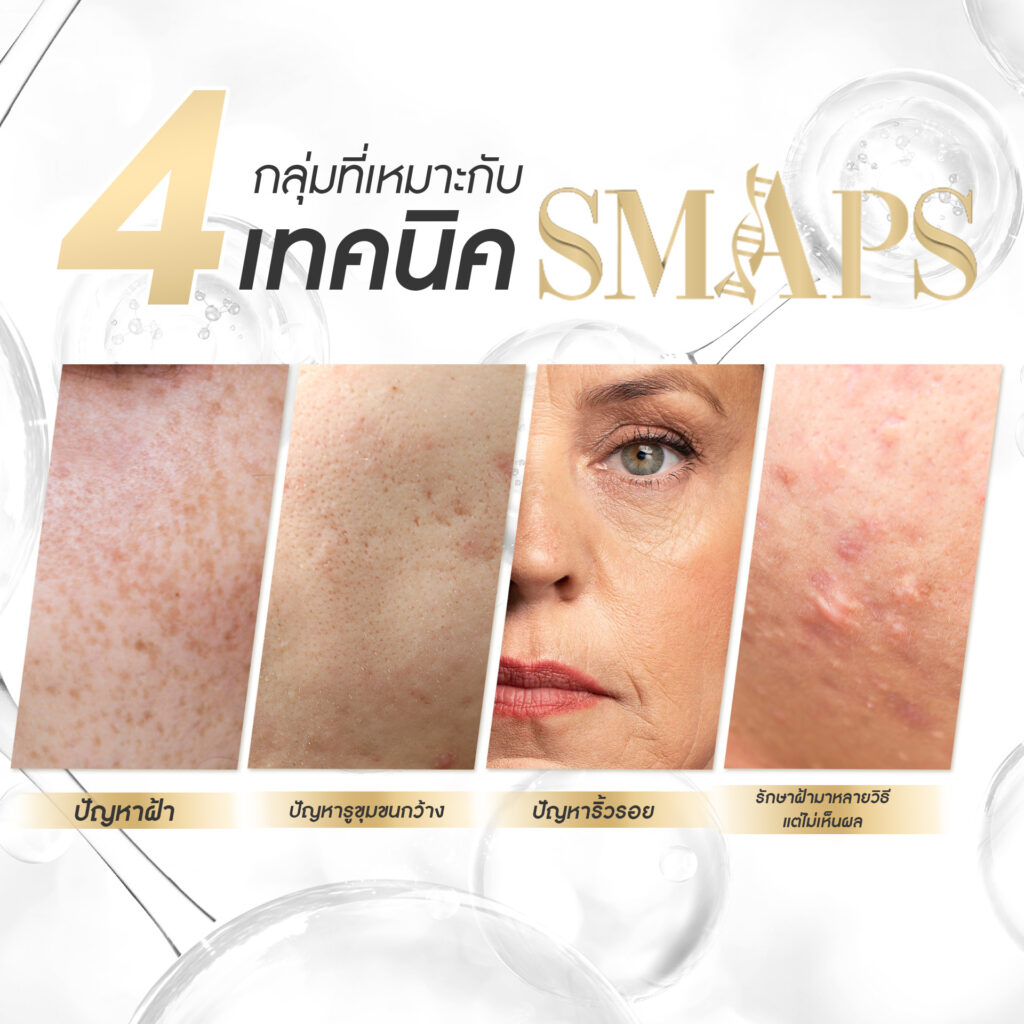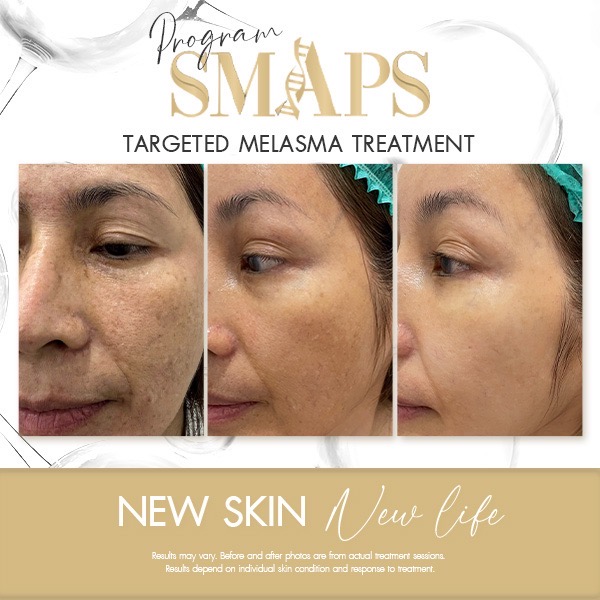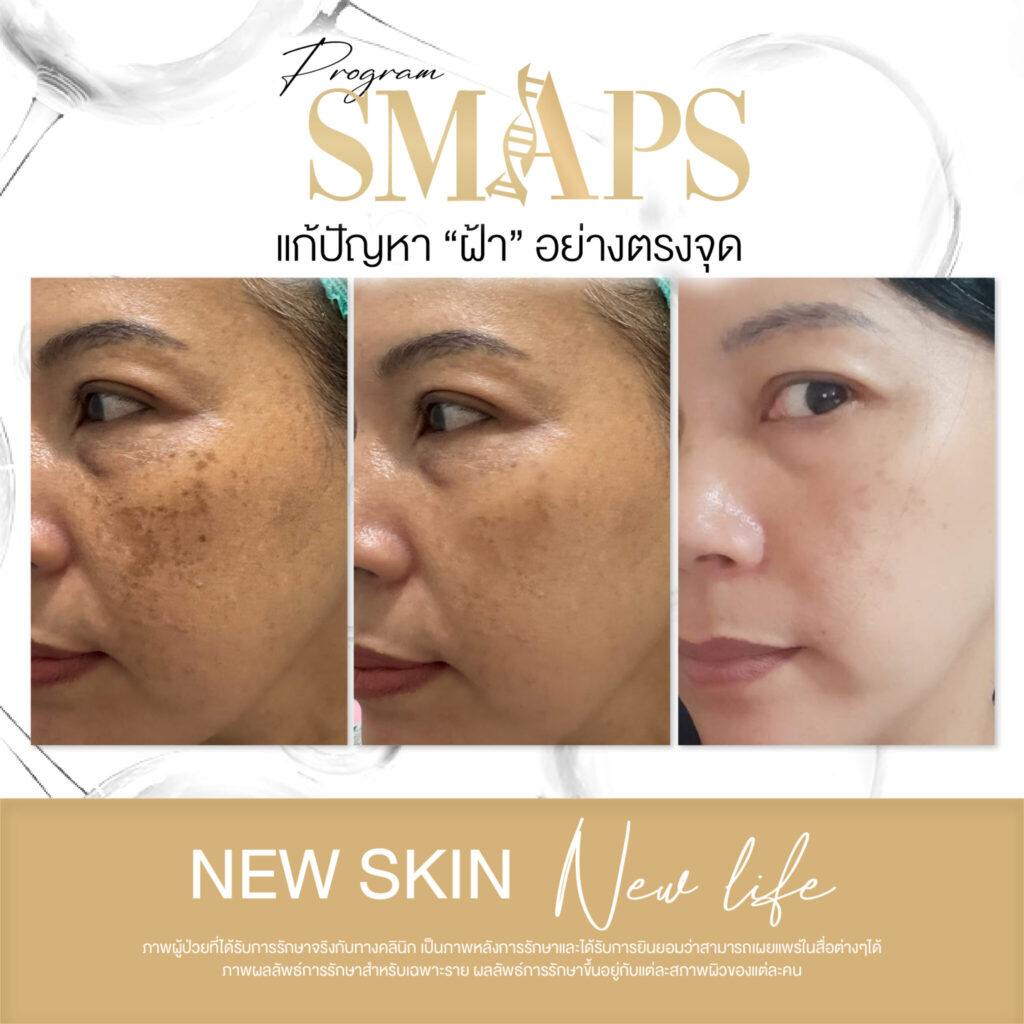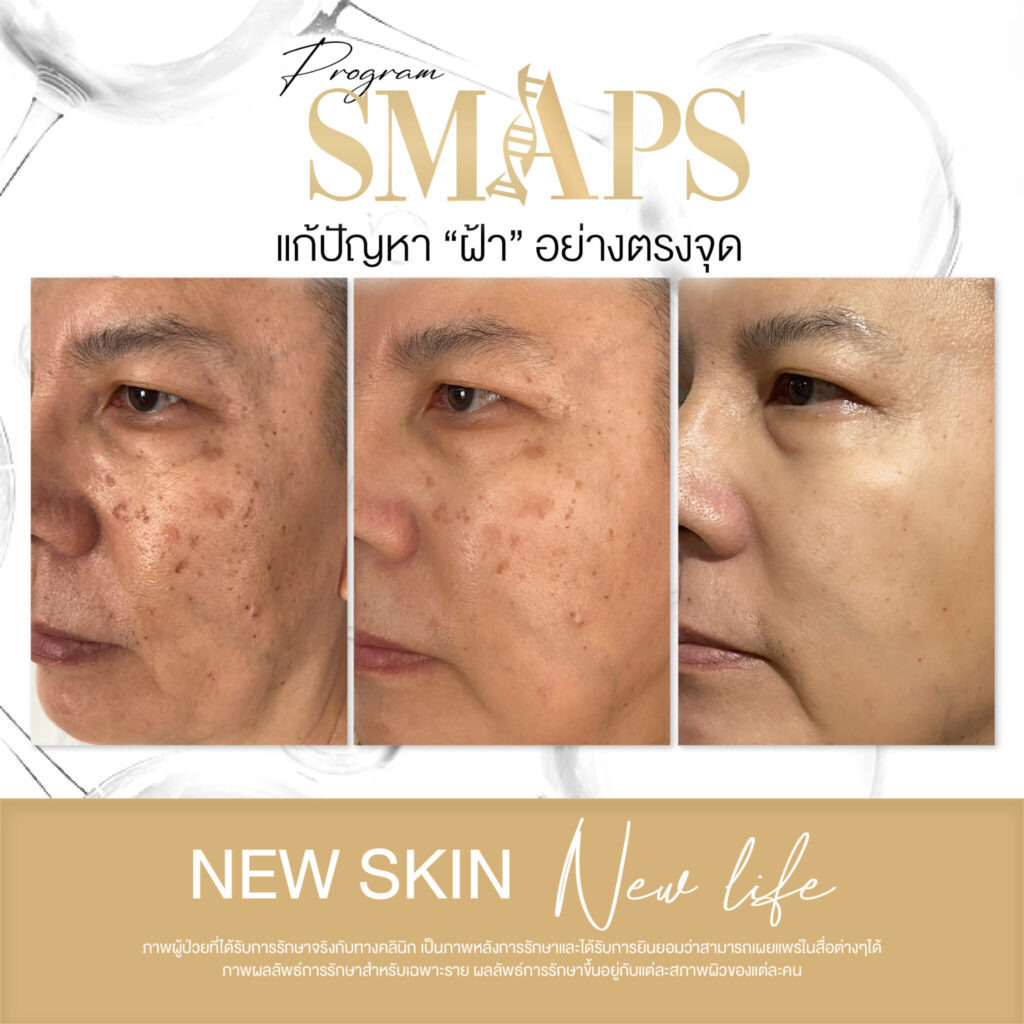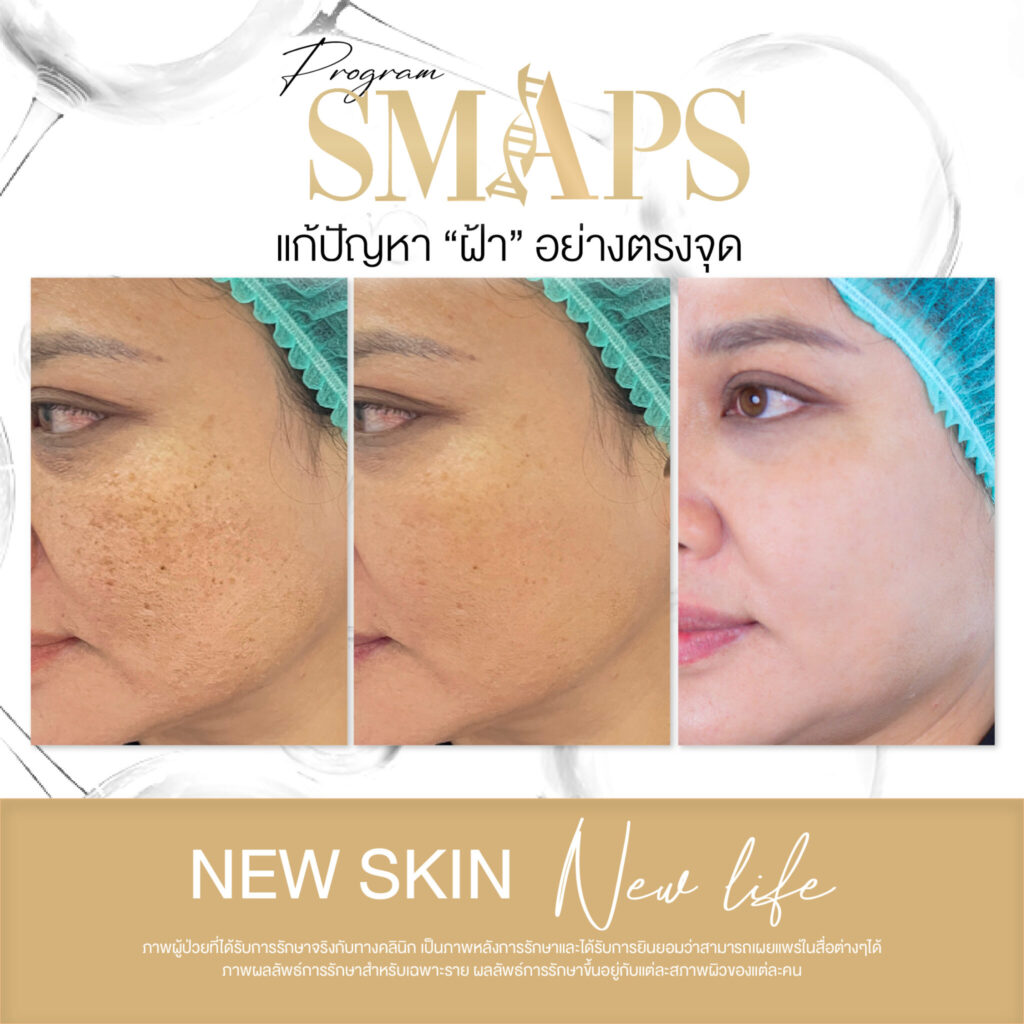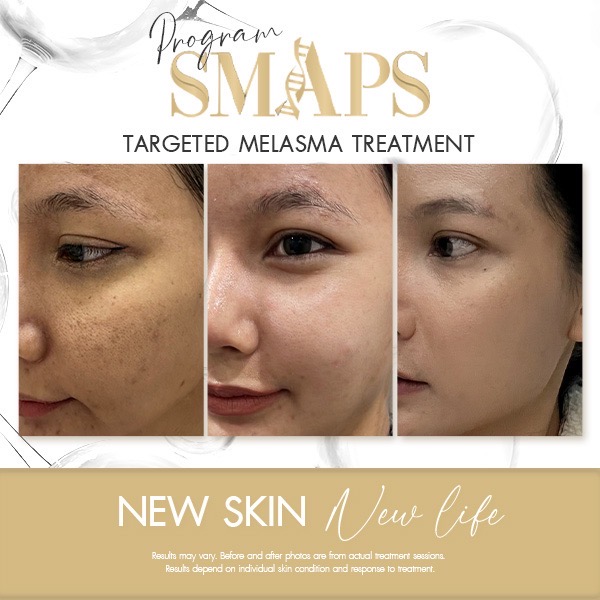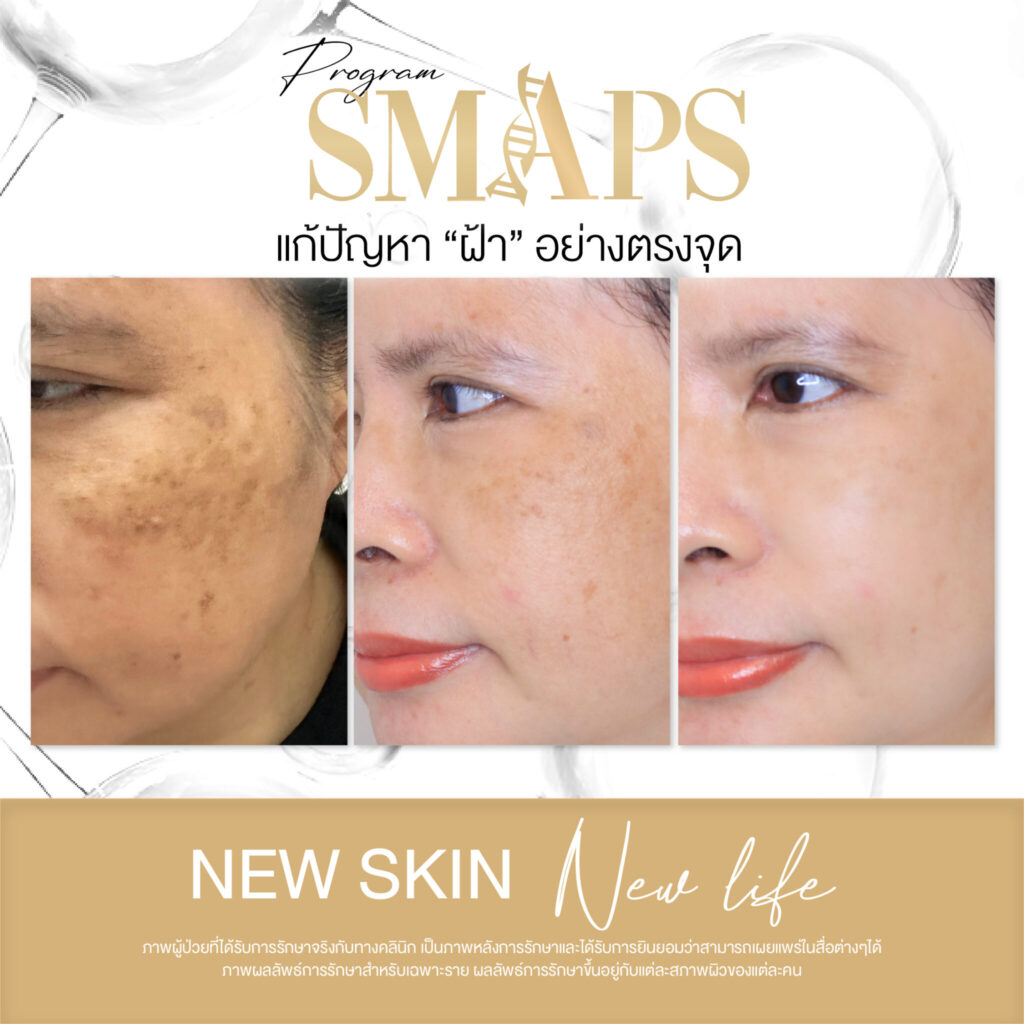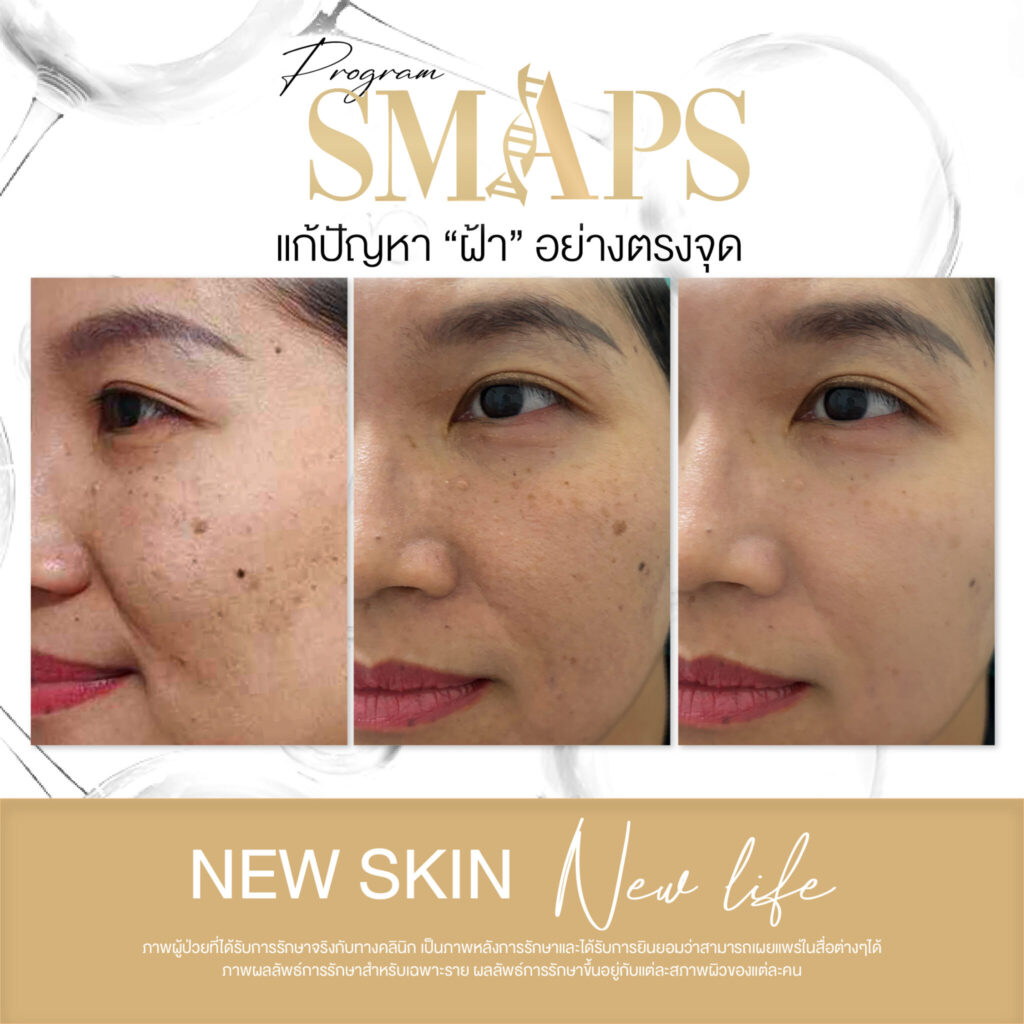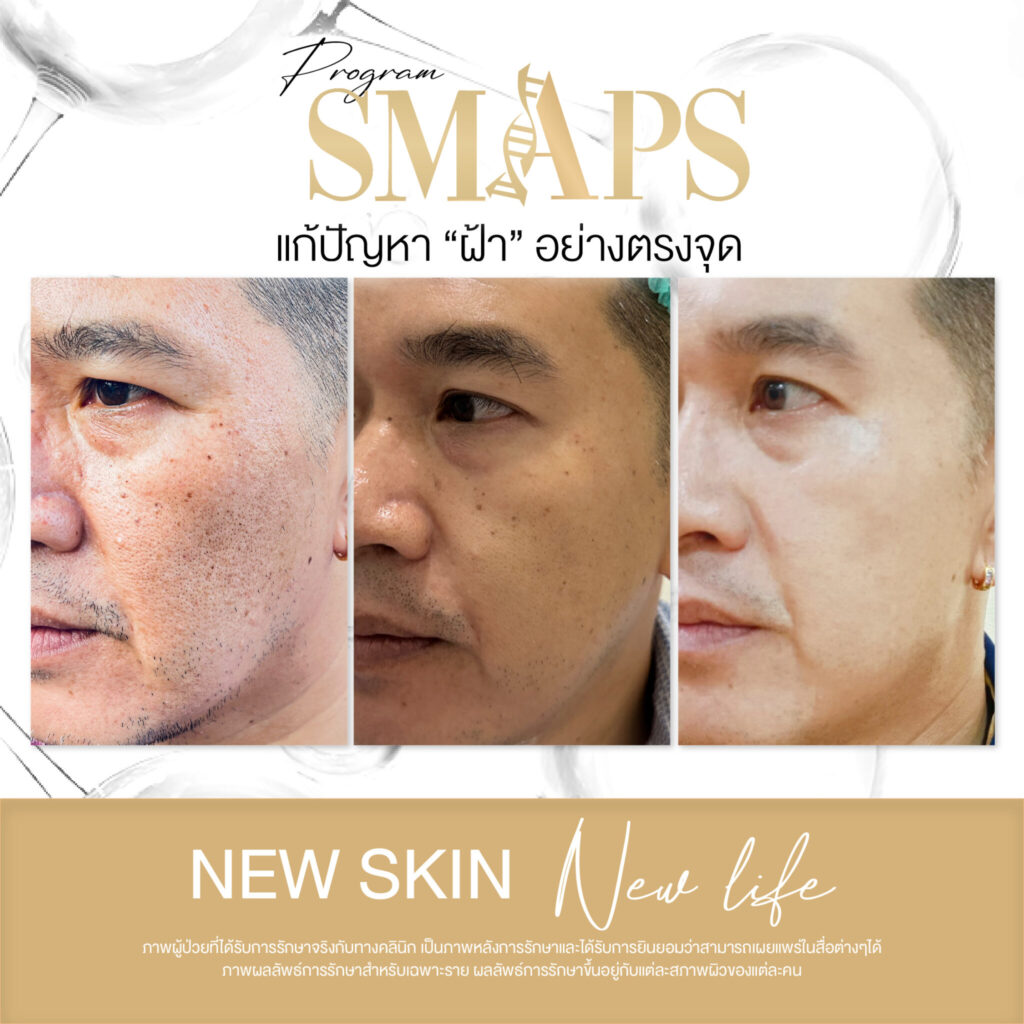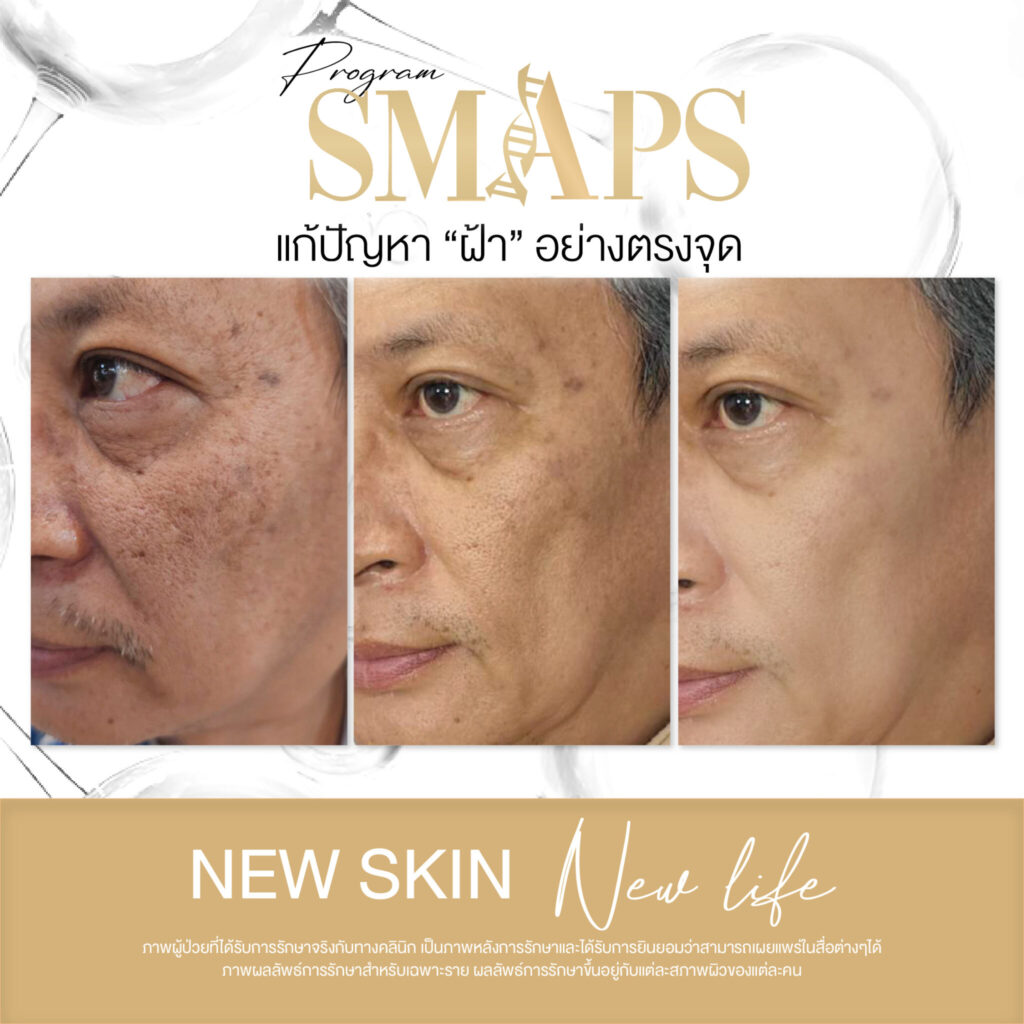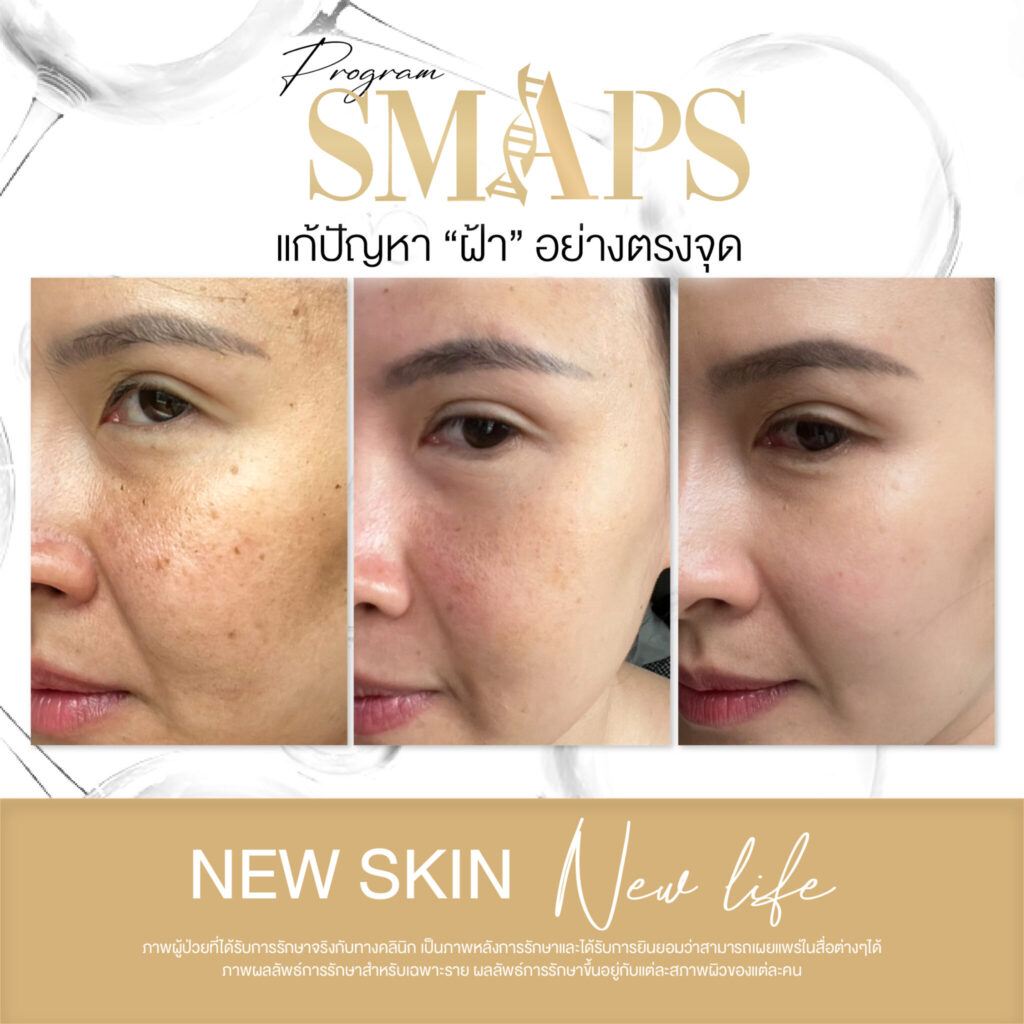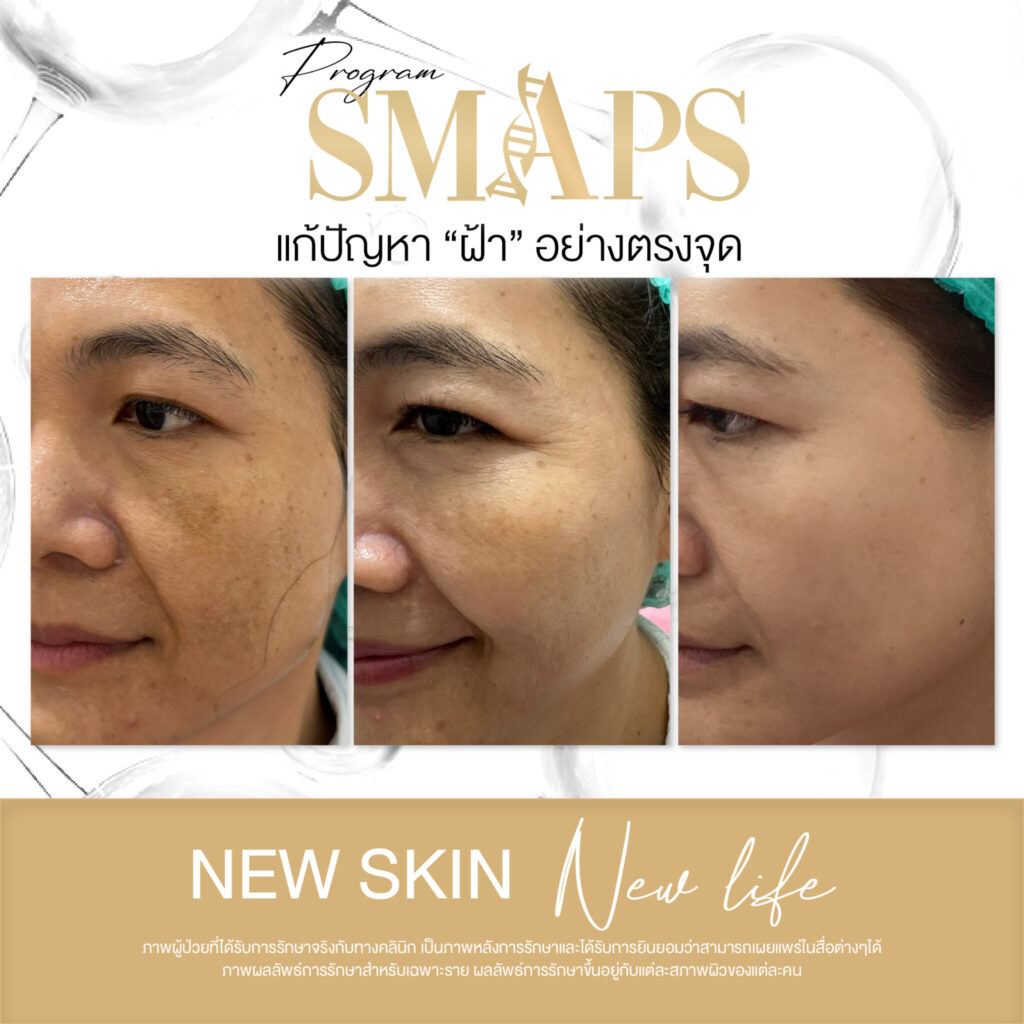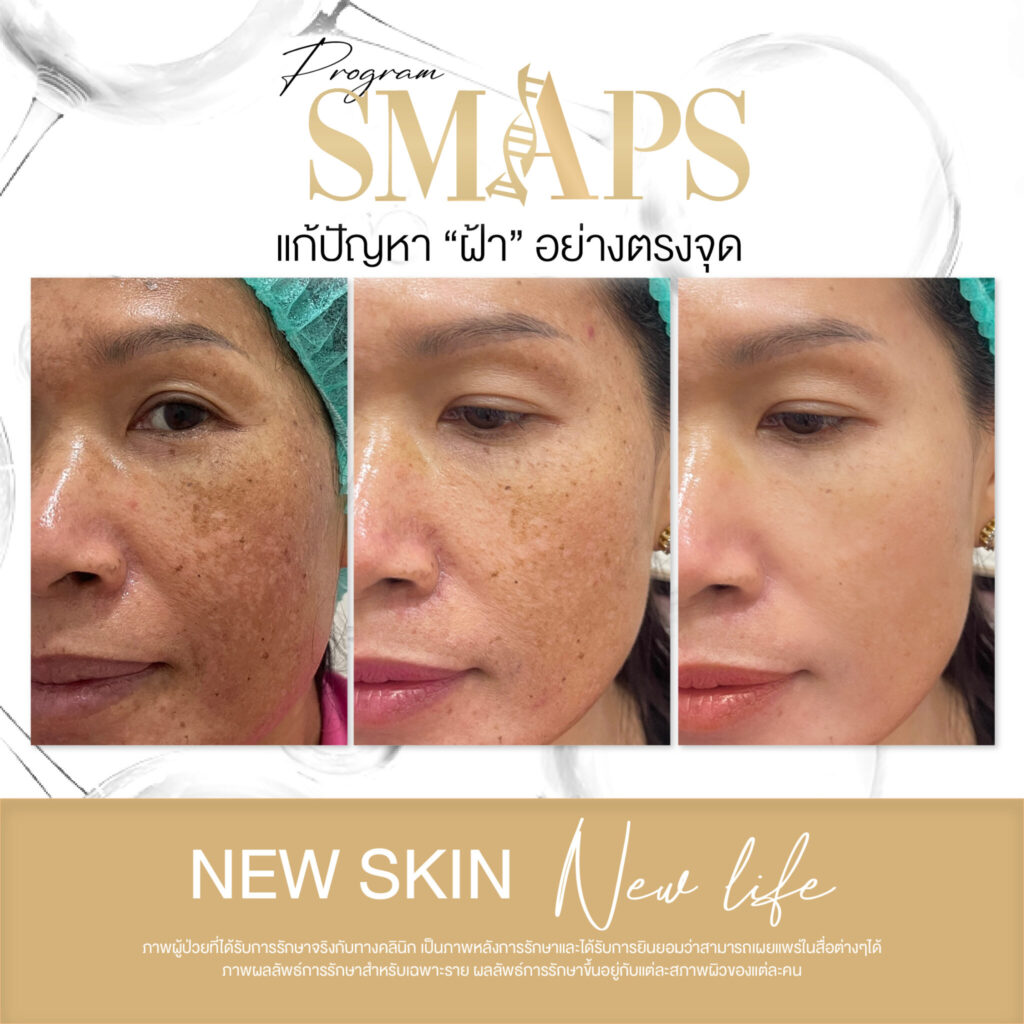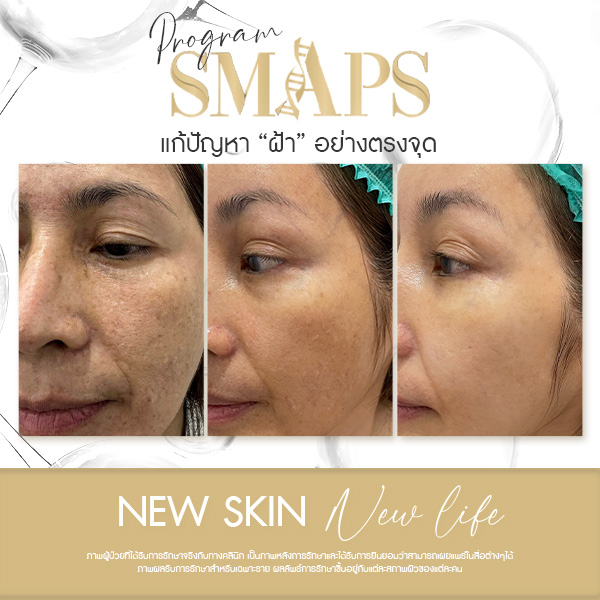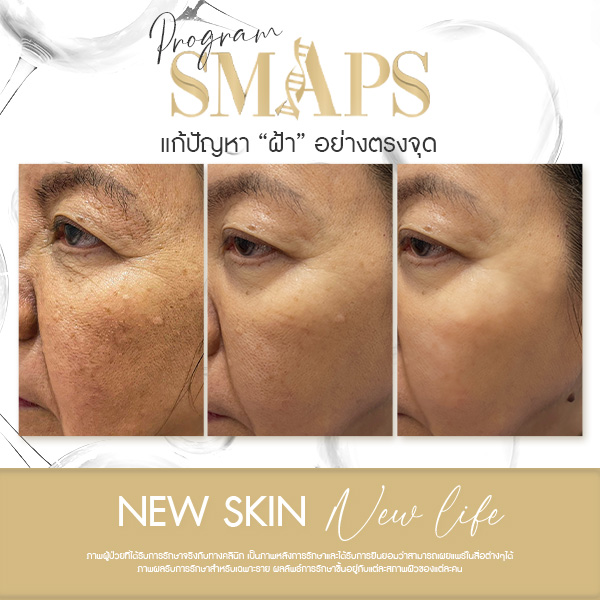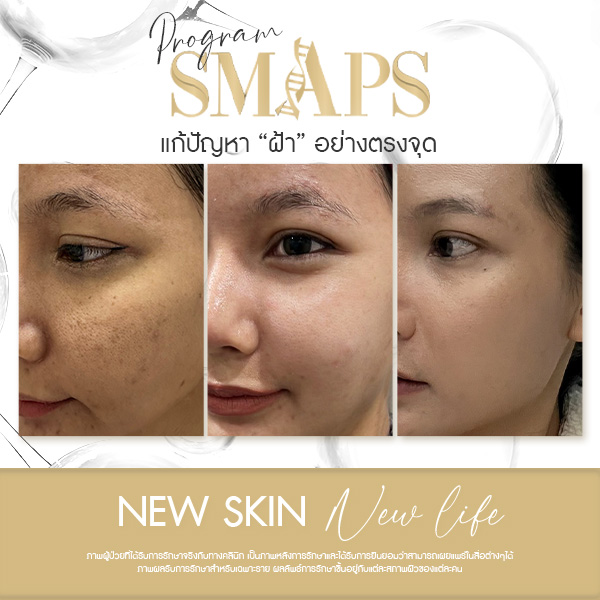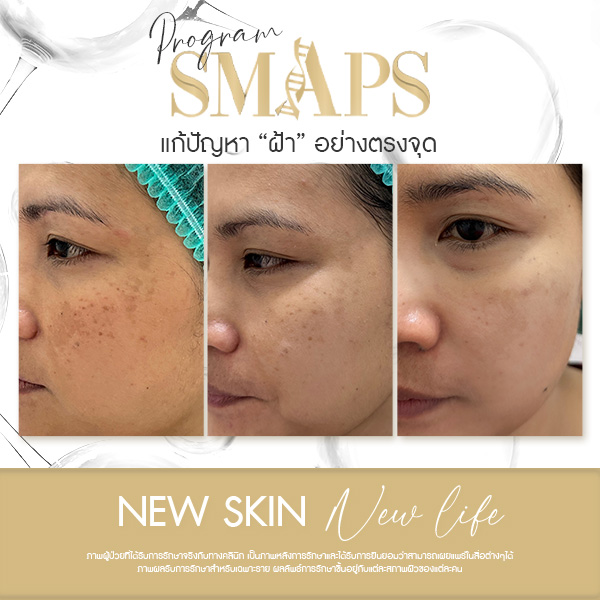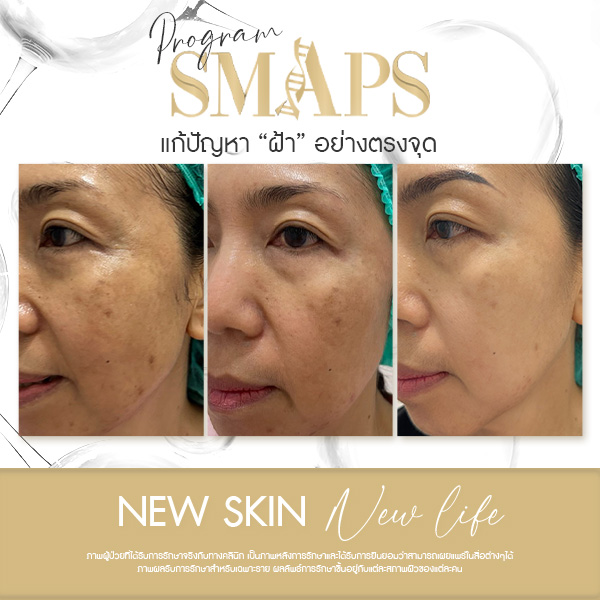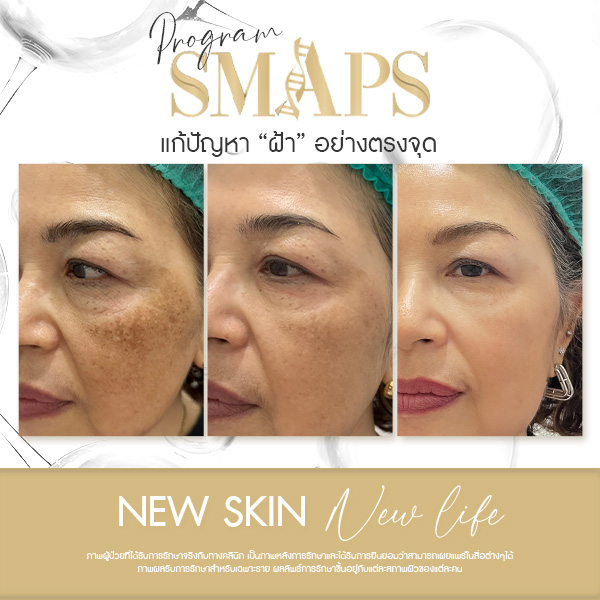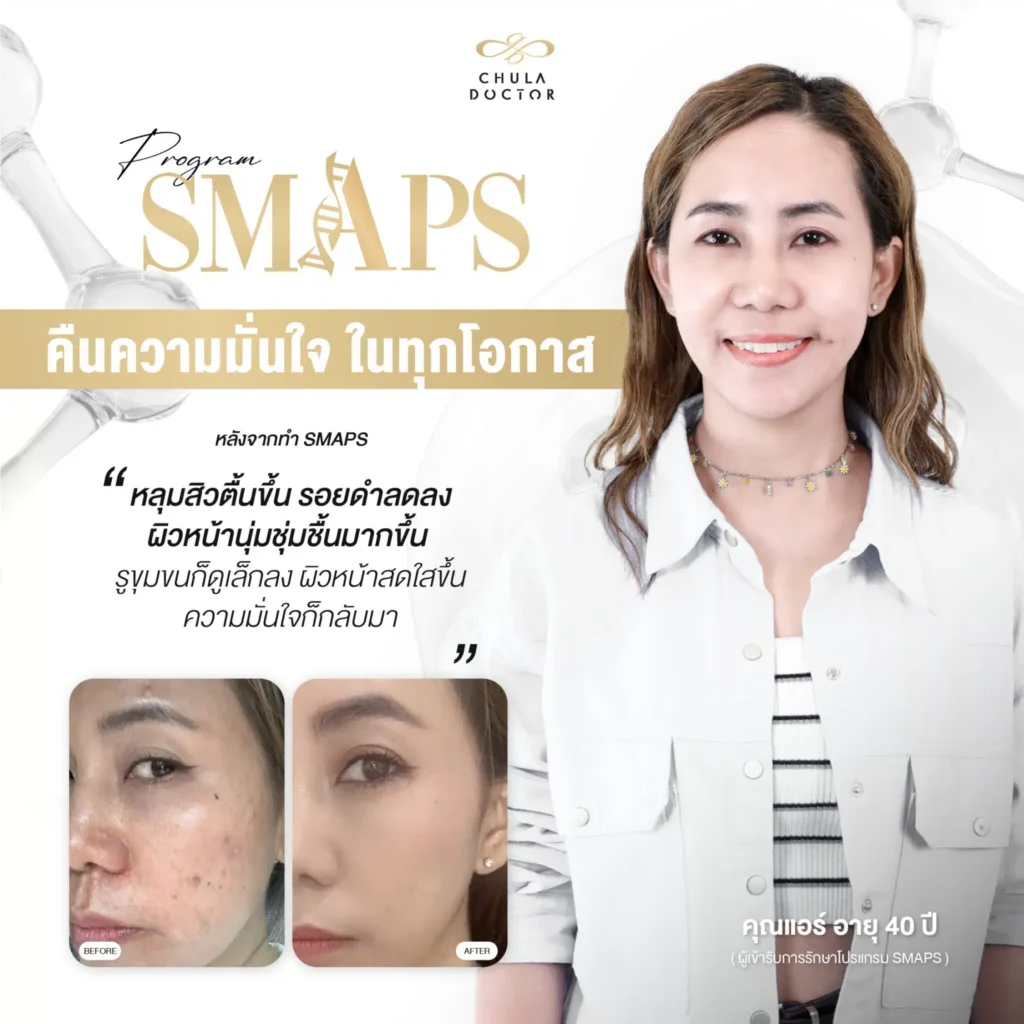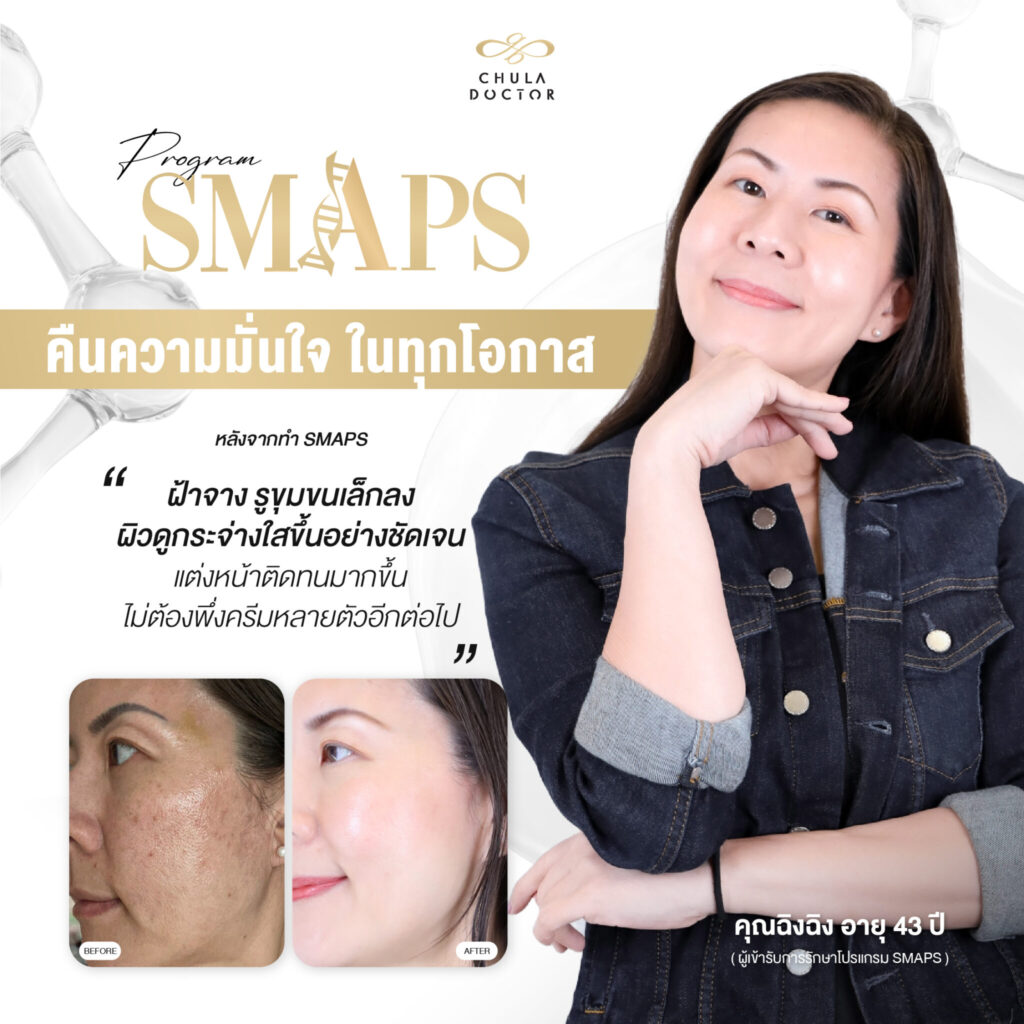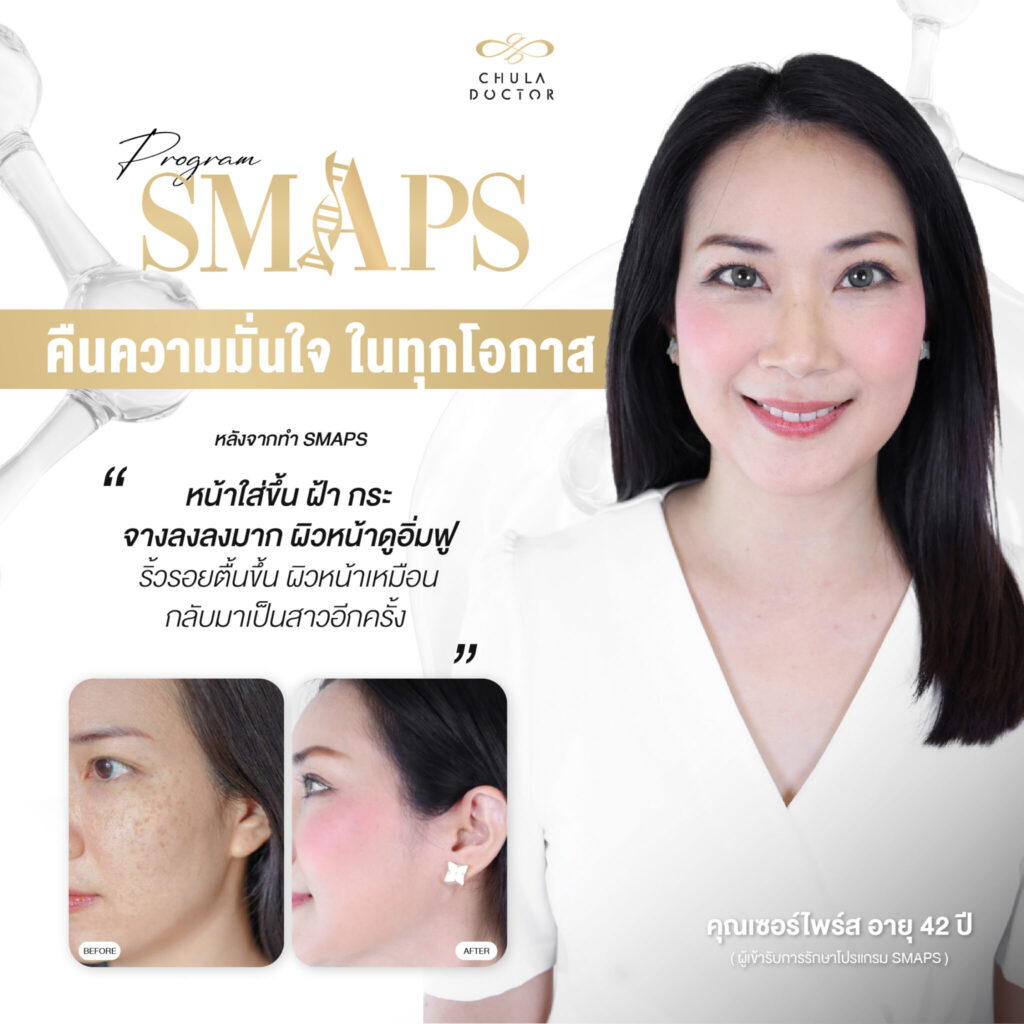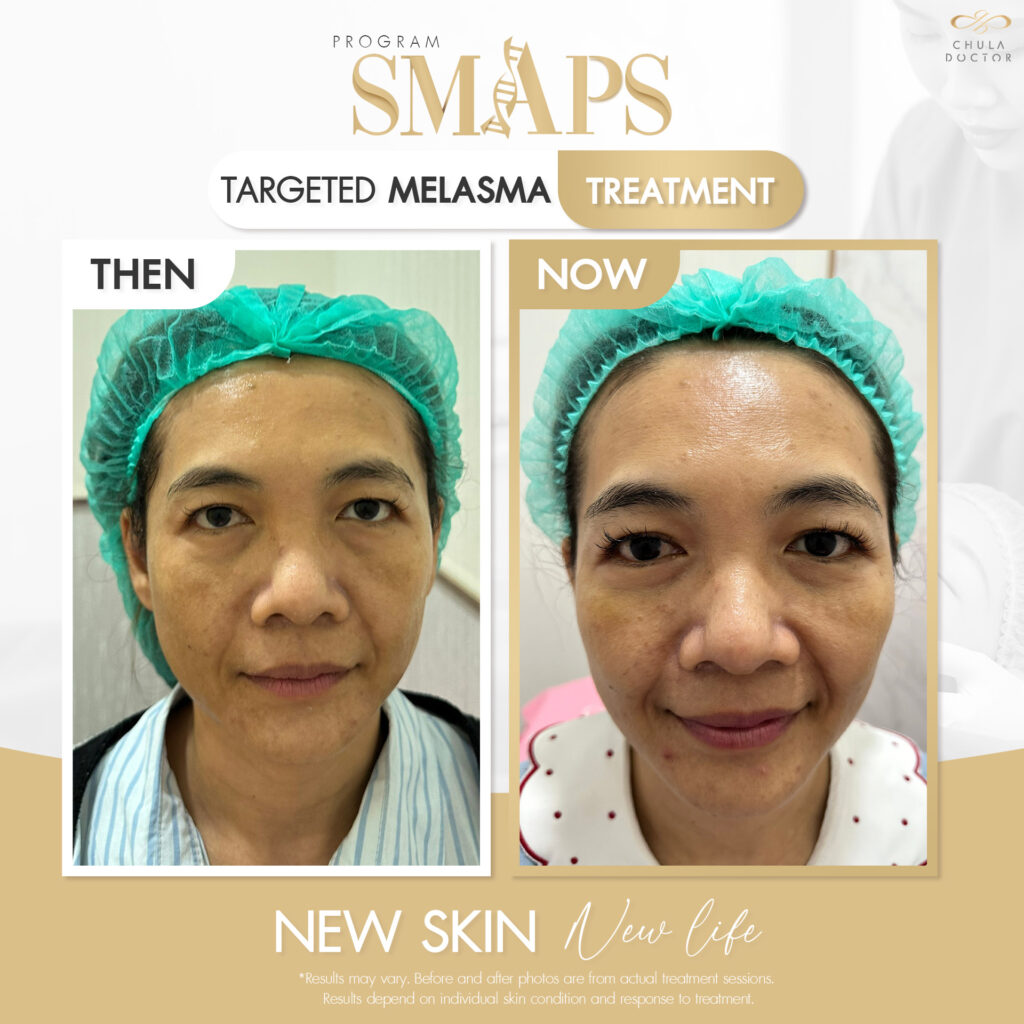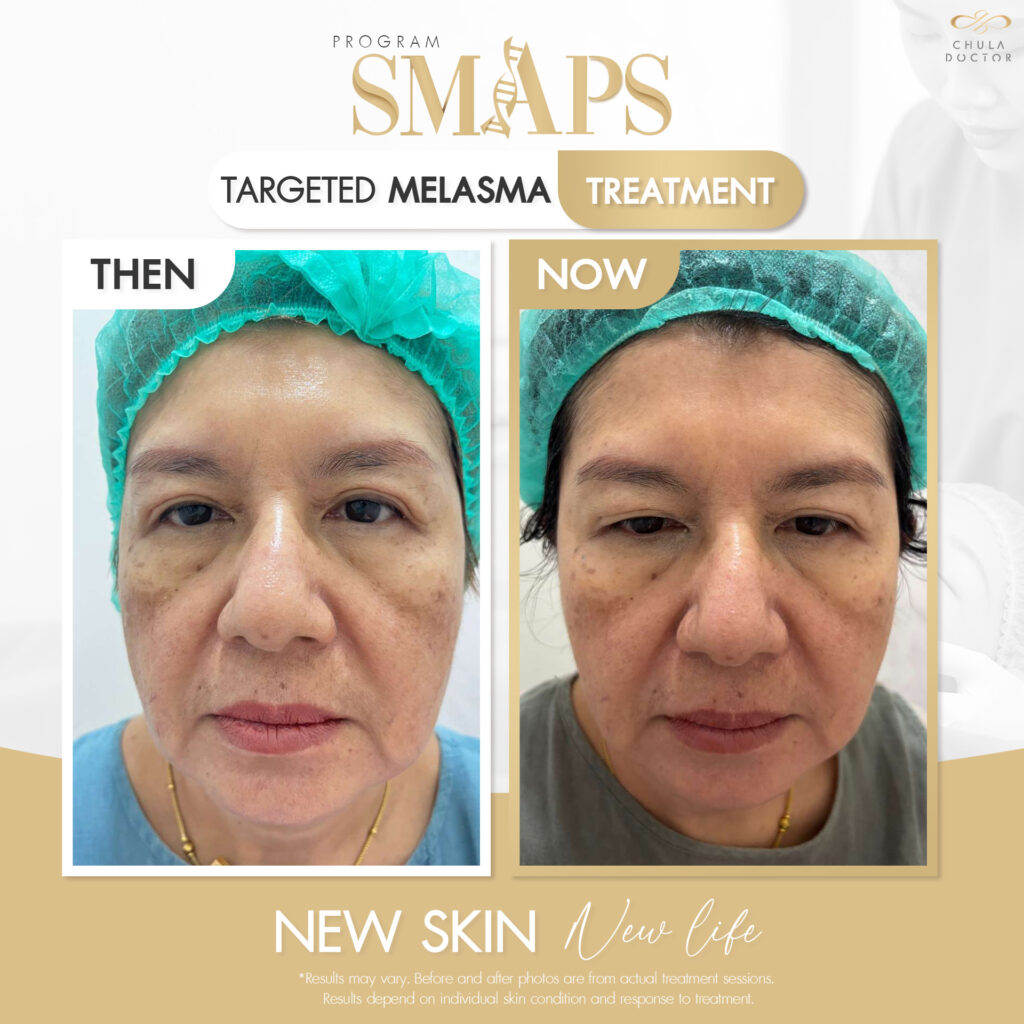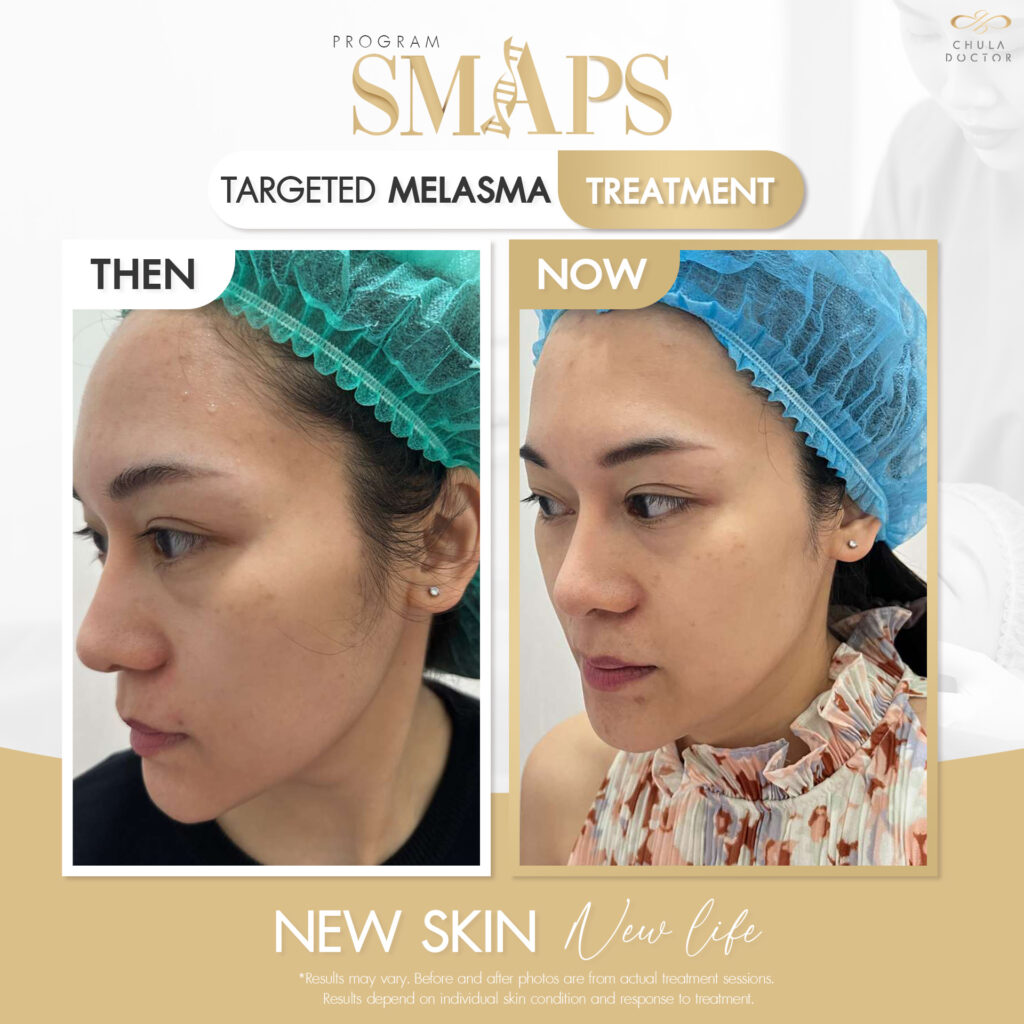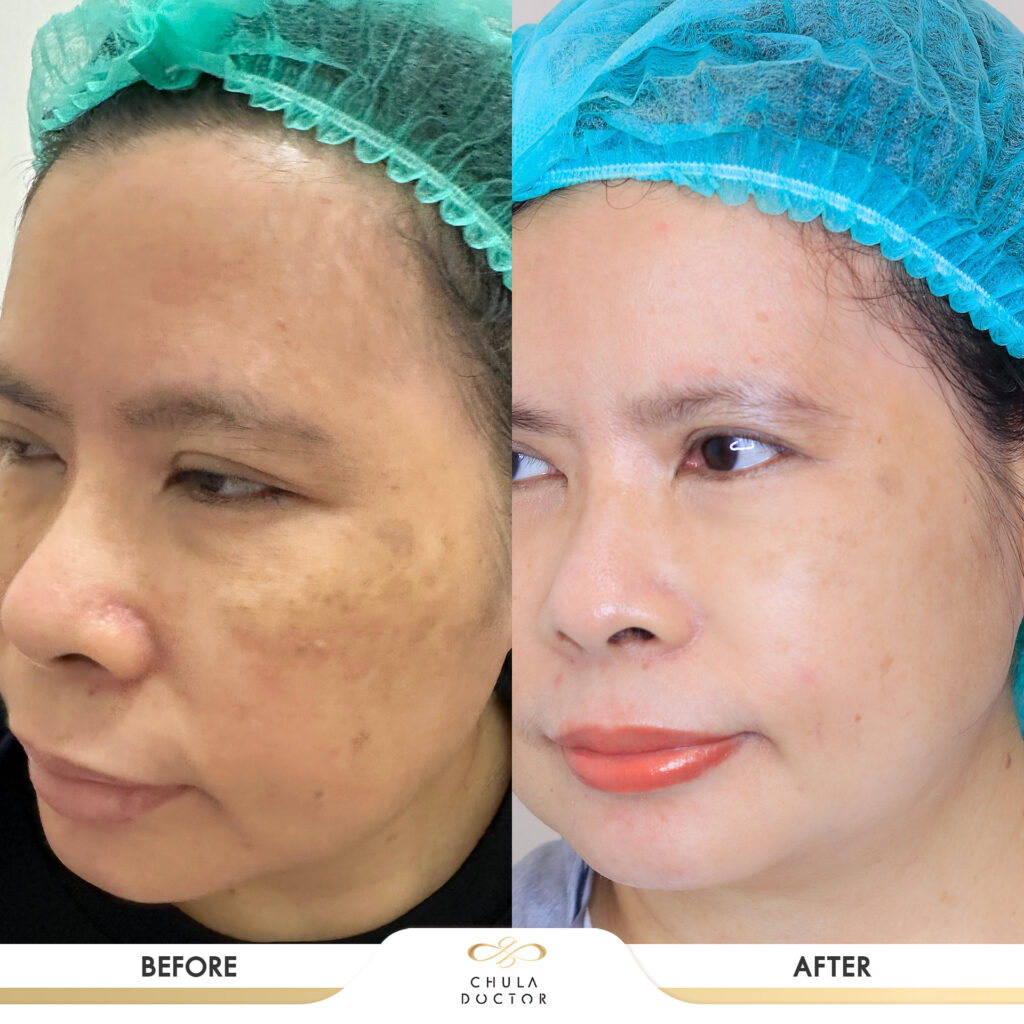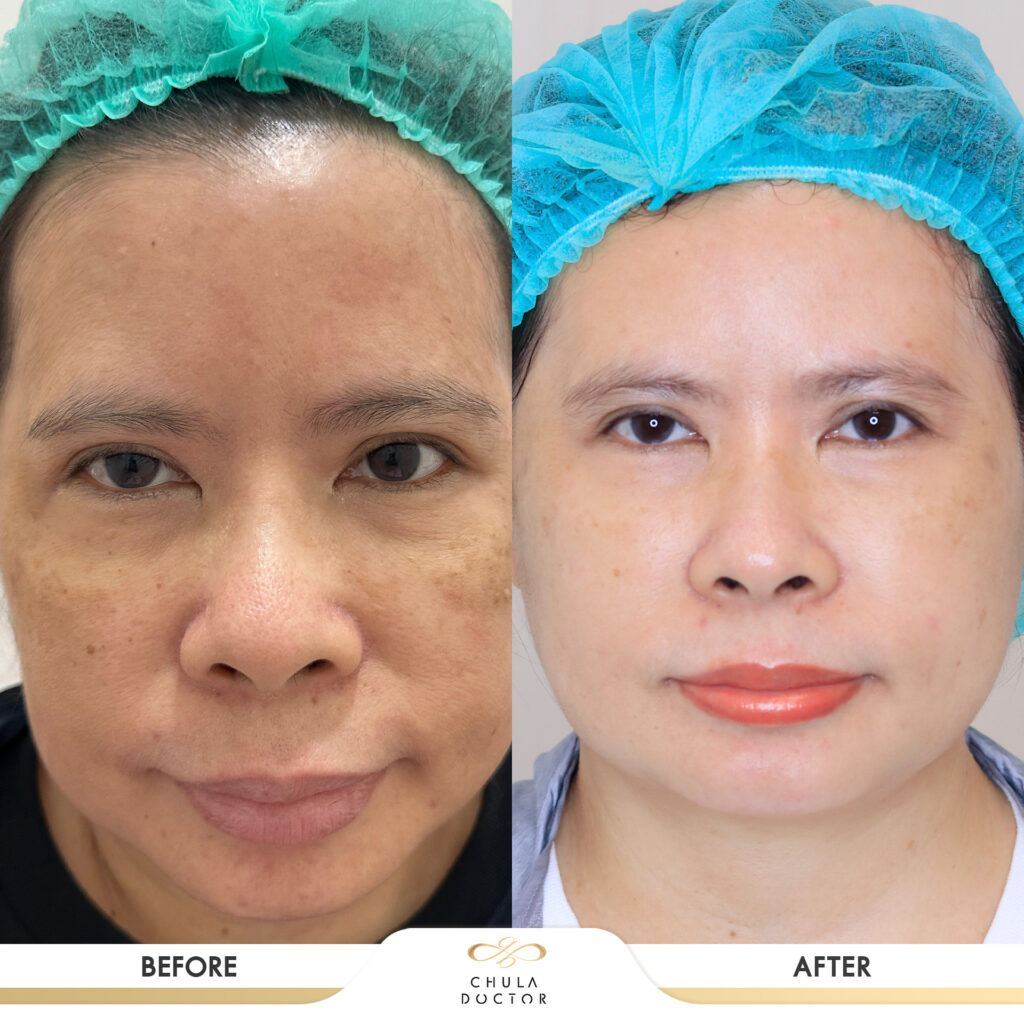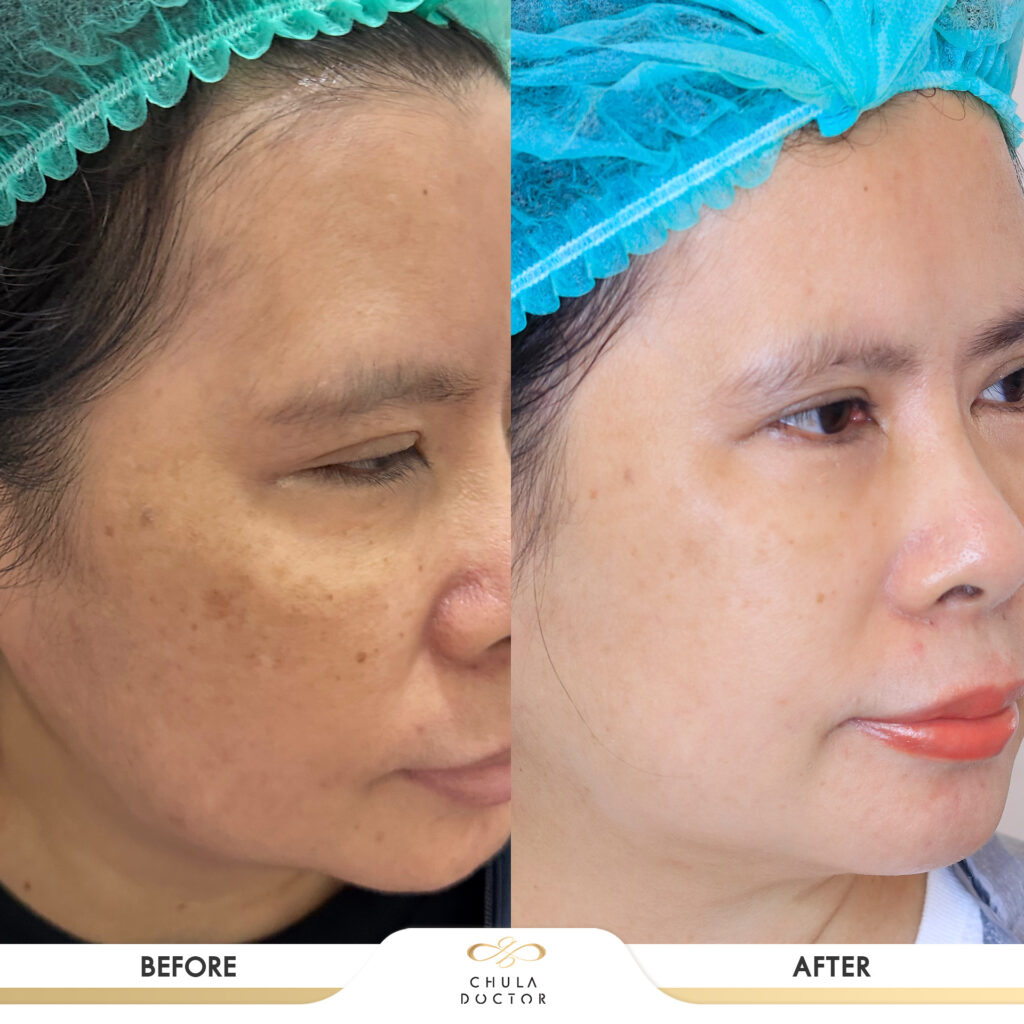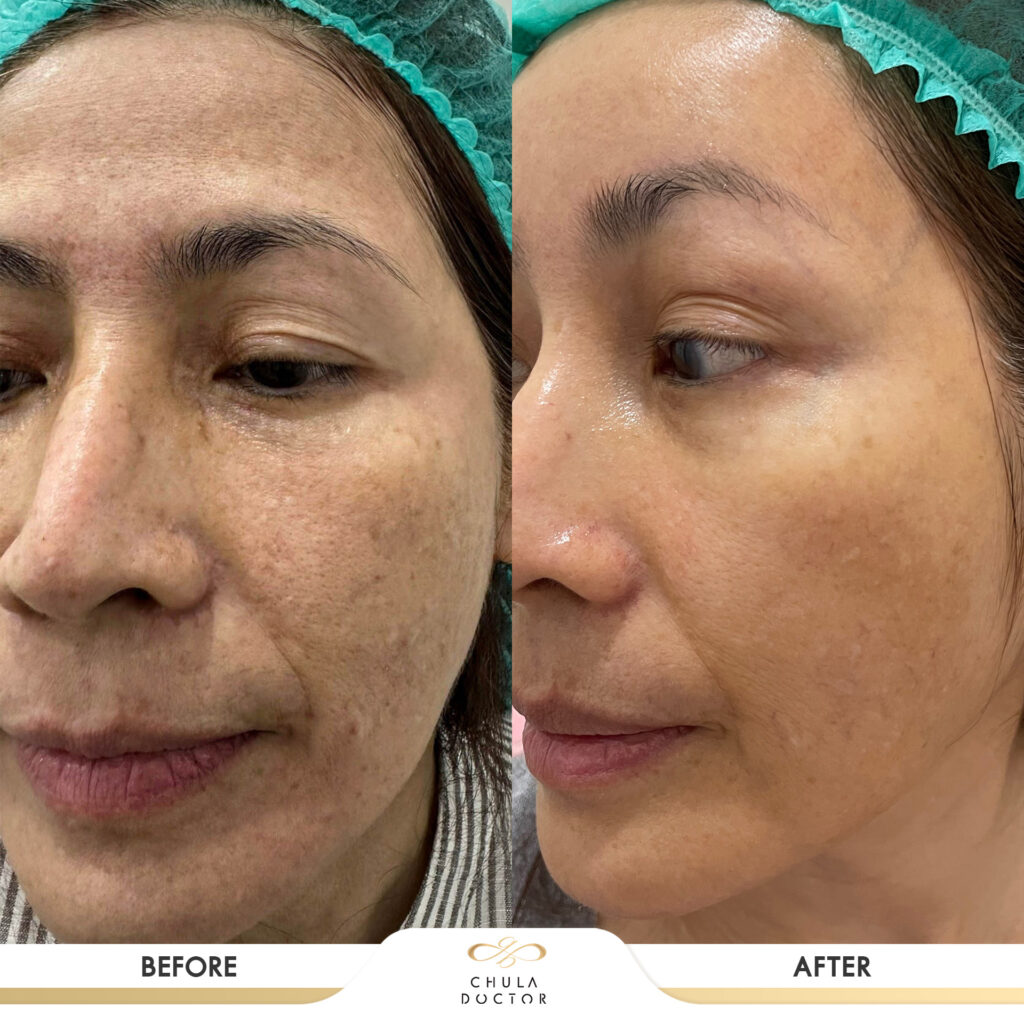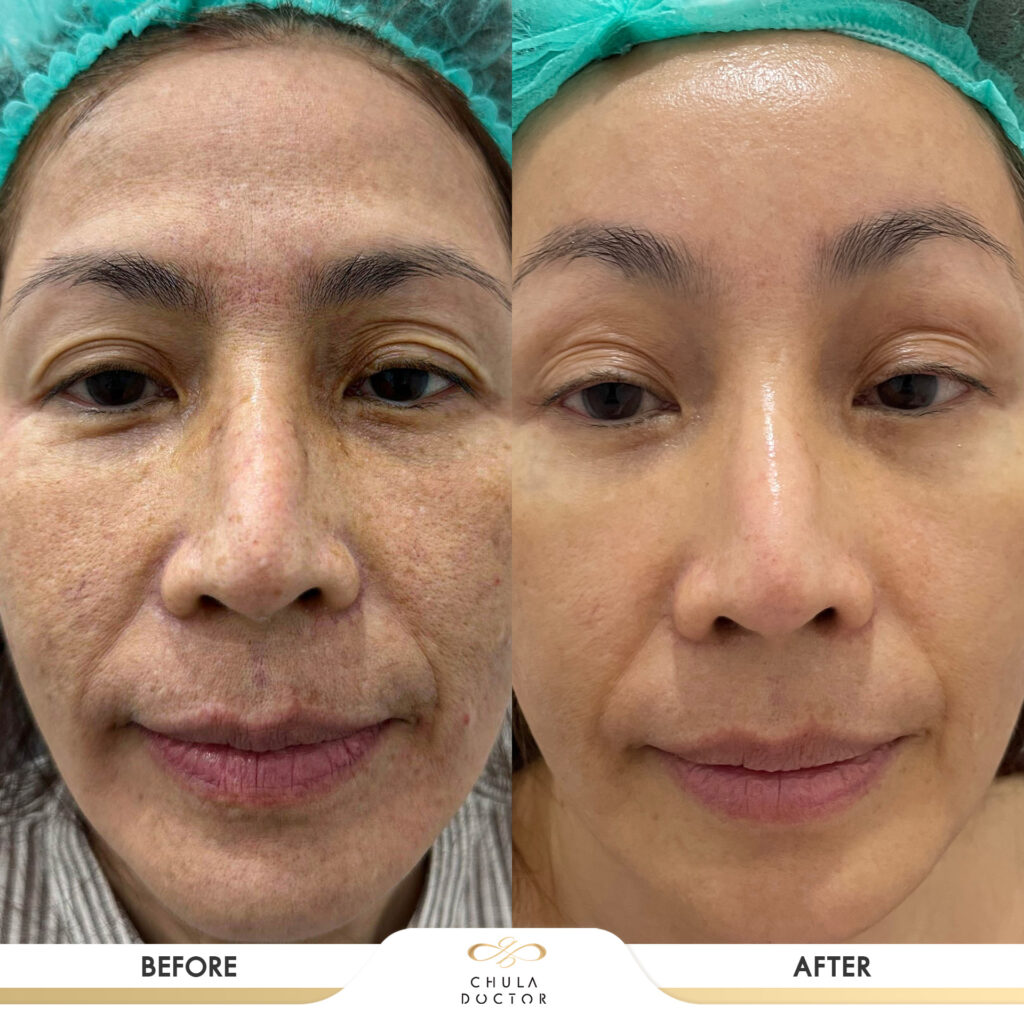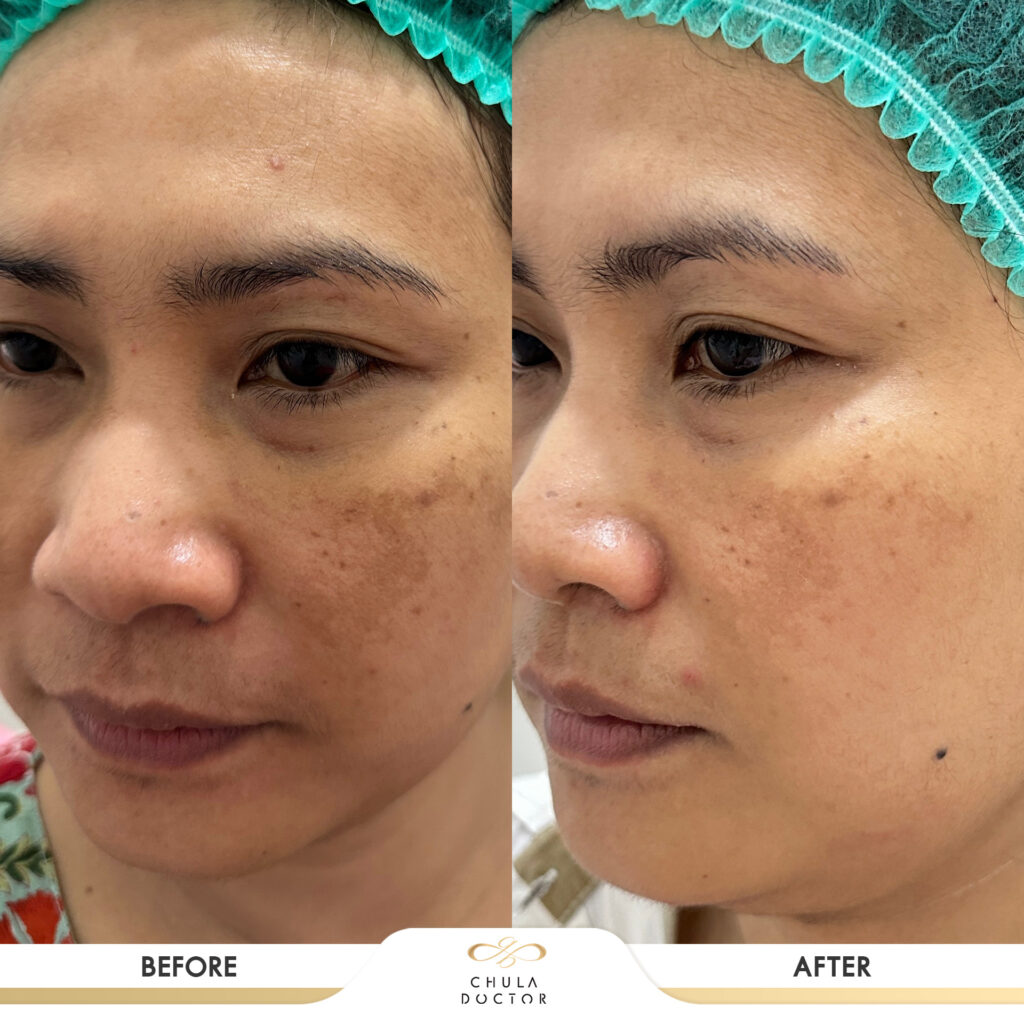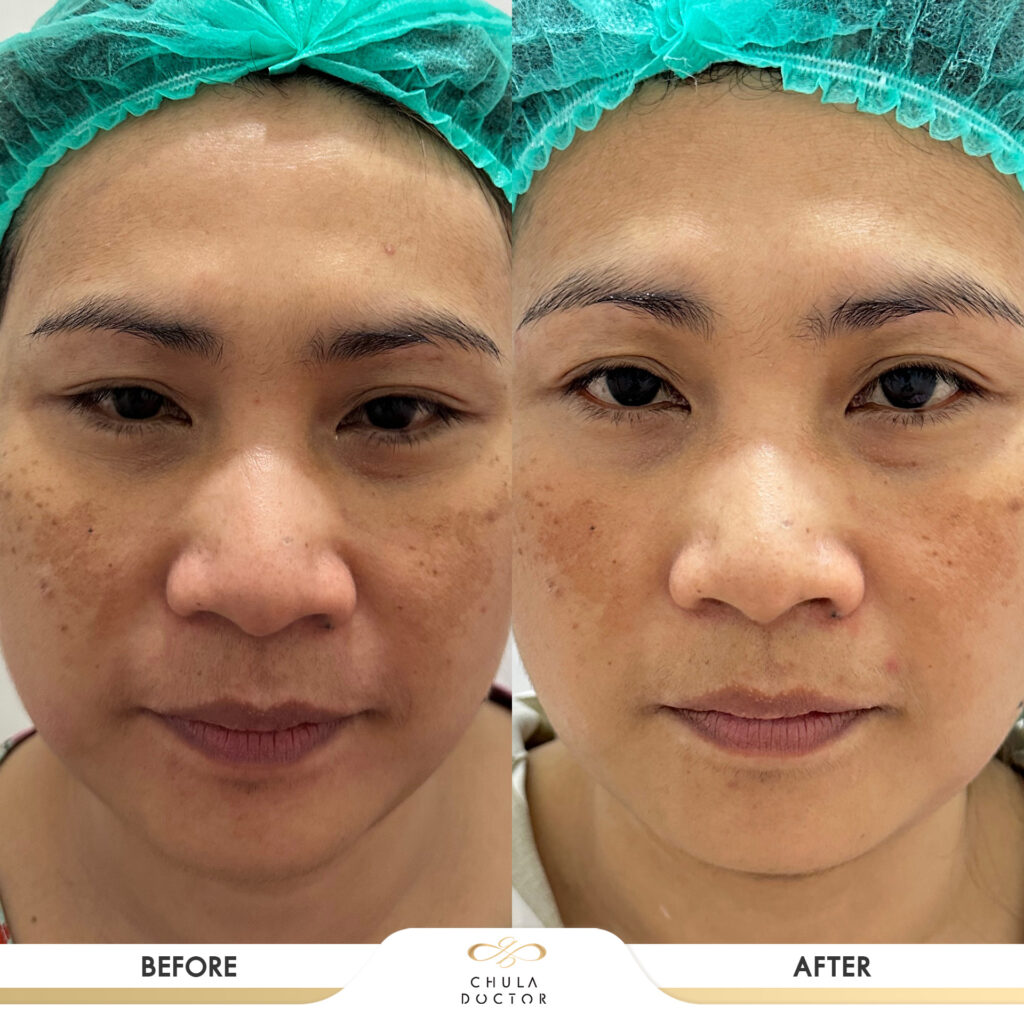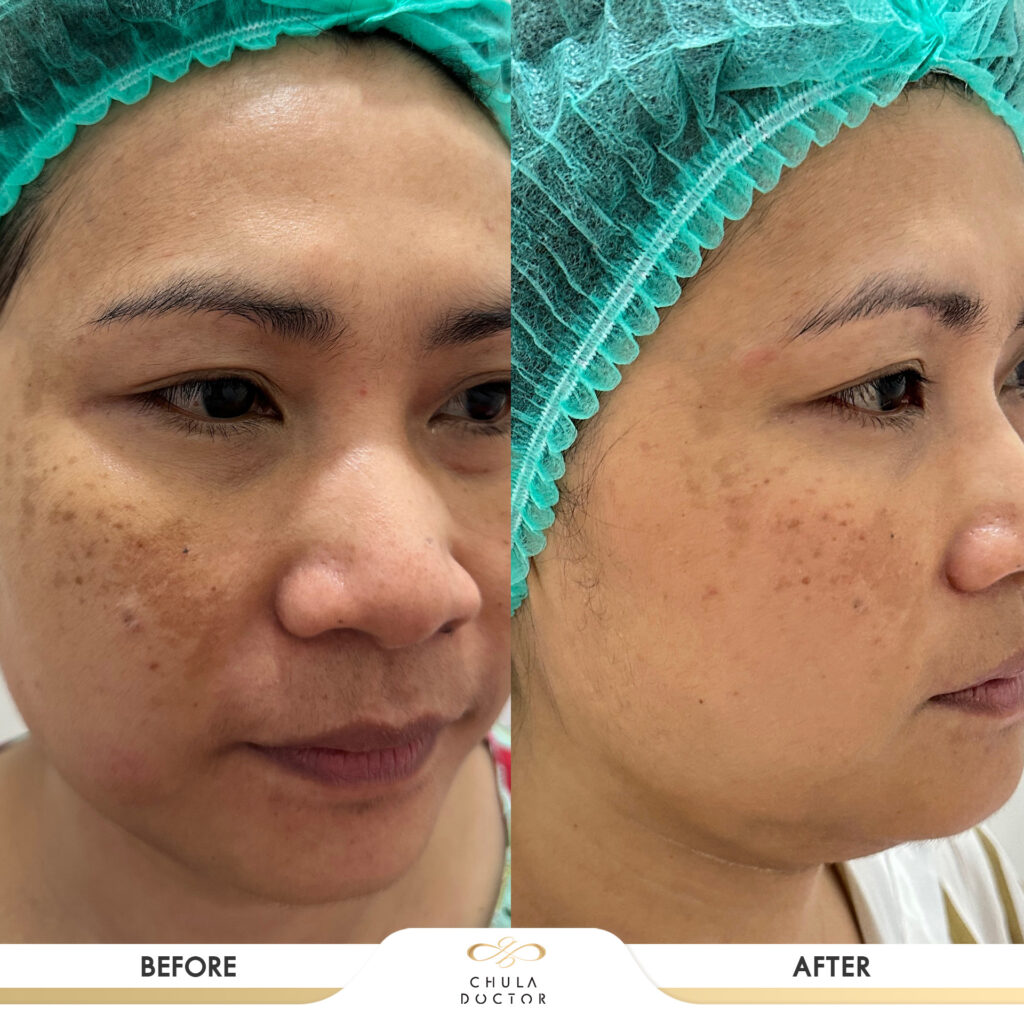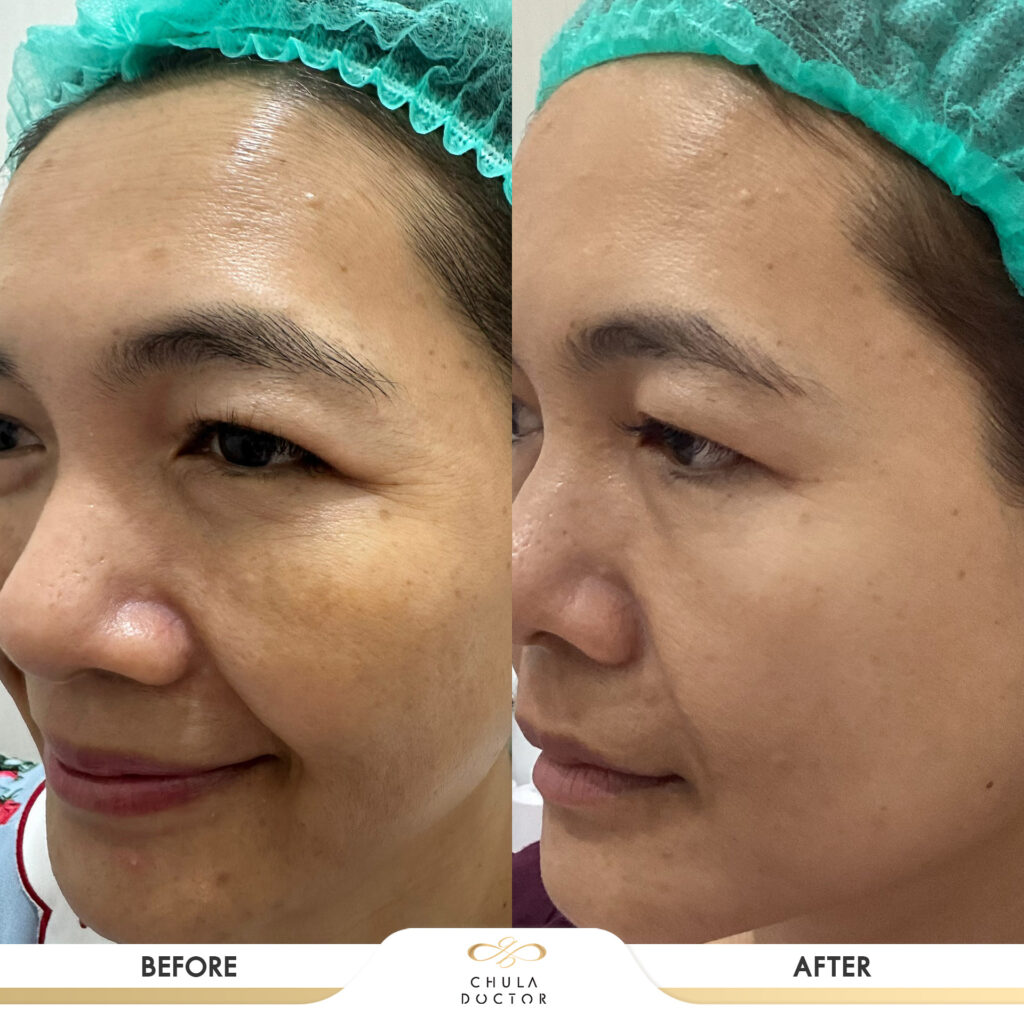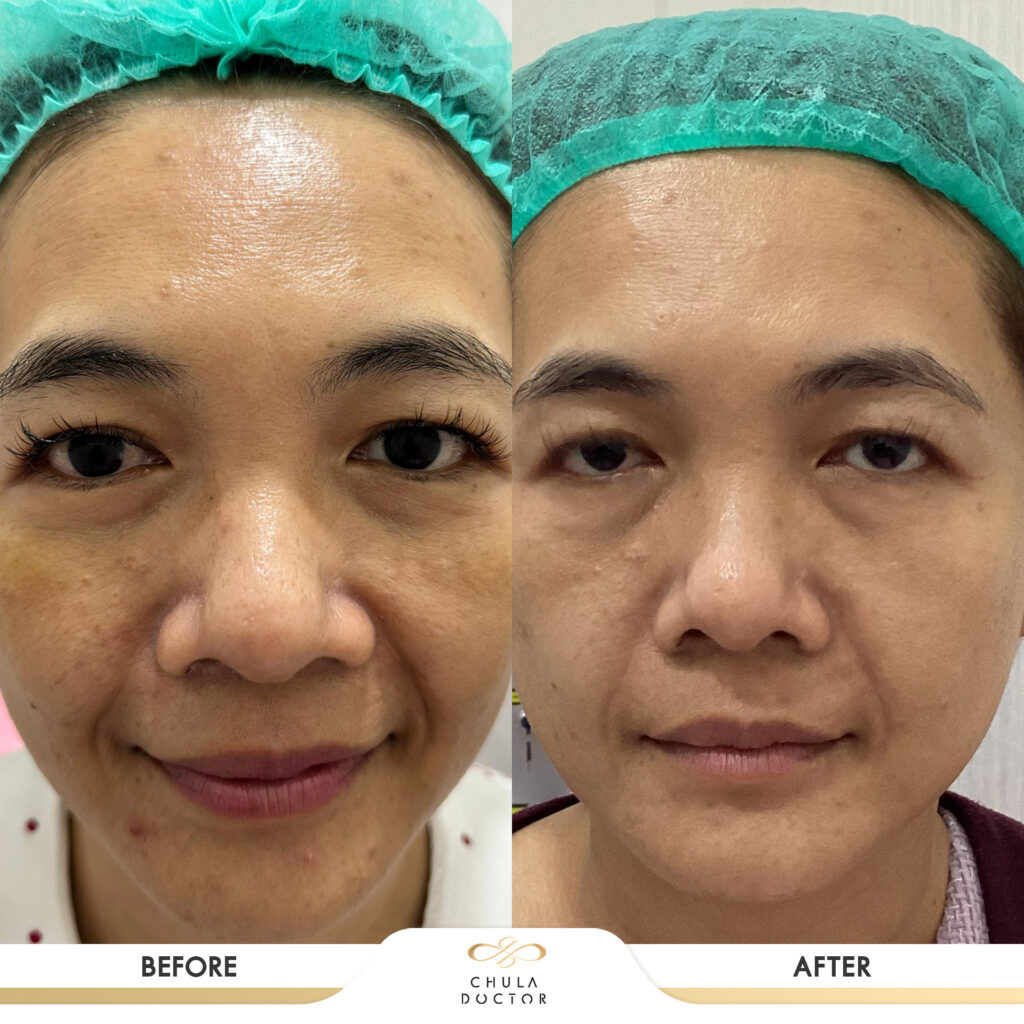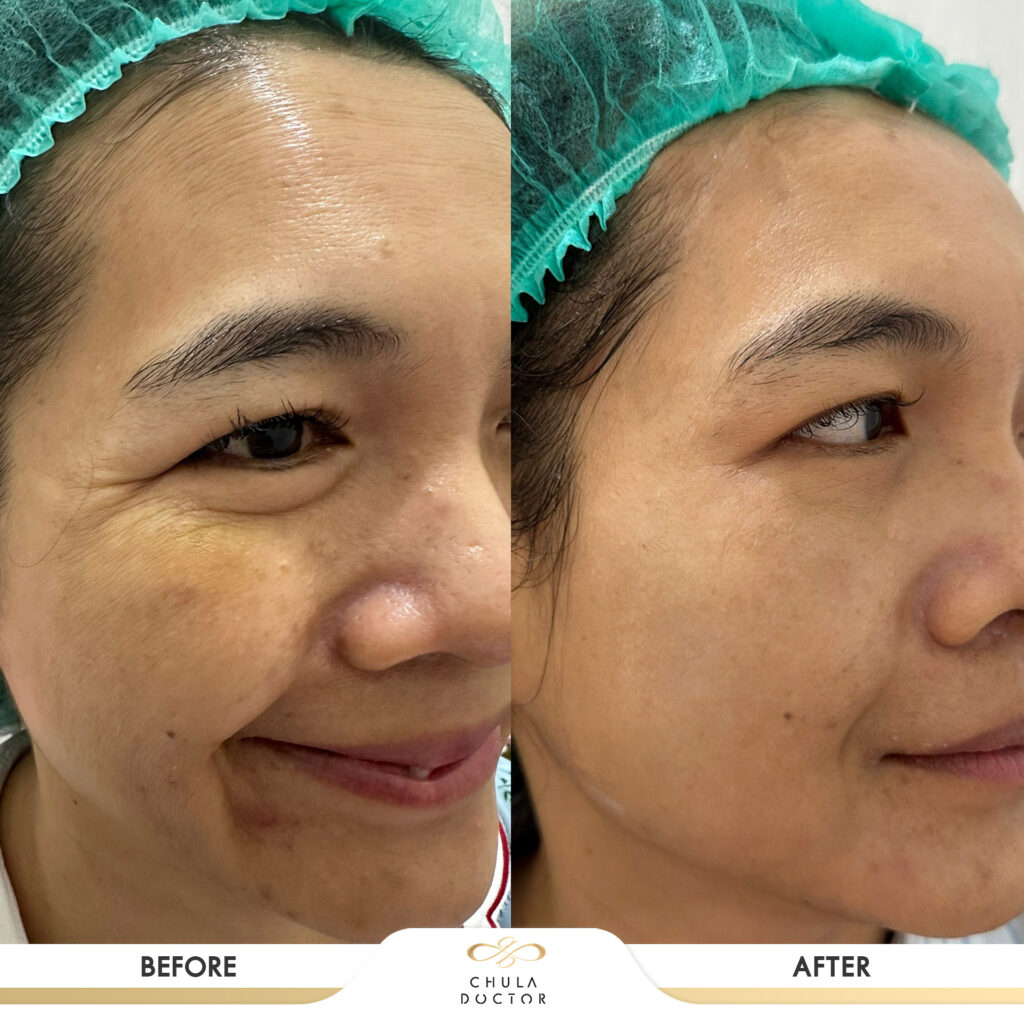Fade Dark Spots & Melasma with SMAPS by Chuladoctor Experts
What is SMAPS: The Advanced Solution for Melasma, Scars & Sensitive Skin?
SMAPS is a deep skin rejuvenation technique that works on a cellular level — repairing damage caused by melasma, acne scars, sensitivity, and dullness. It helps restore a firmer, smoother, youthful complexion with long-lasting skin health.
SMAPS: Melasma Repair at the Cellular Level
No matter the type — we fade them all
Whatever the Type, SMAPS Has You Covered
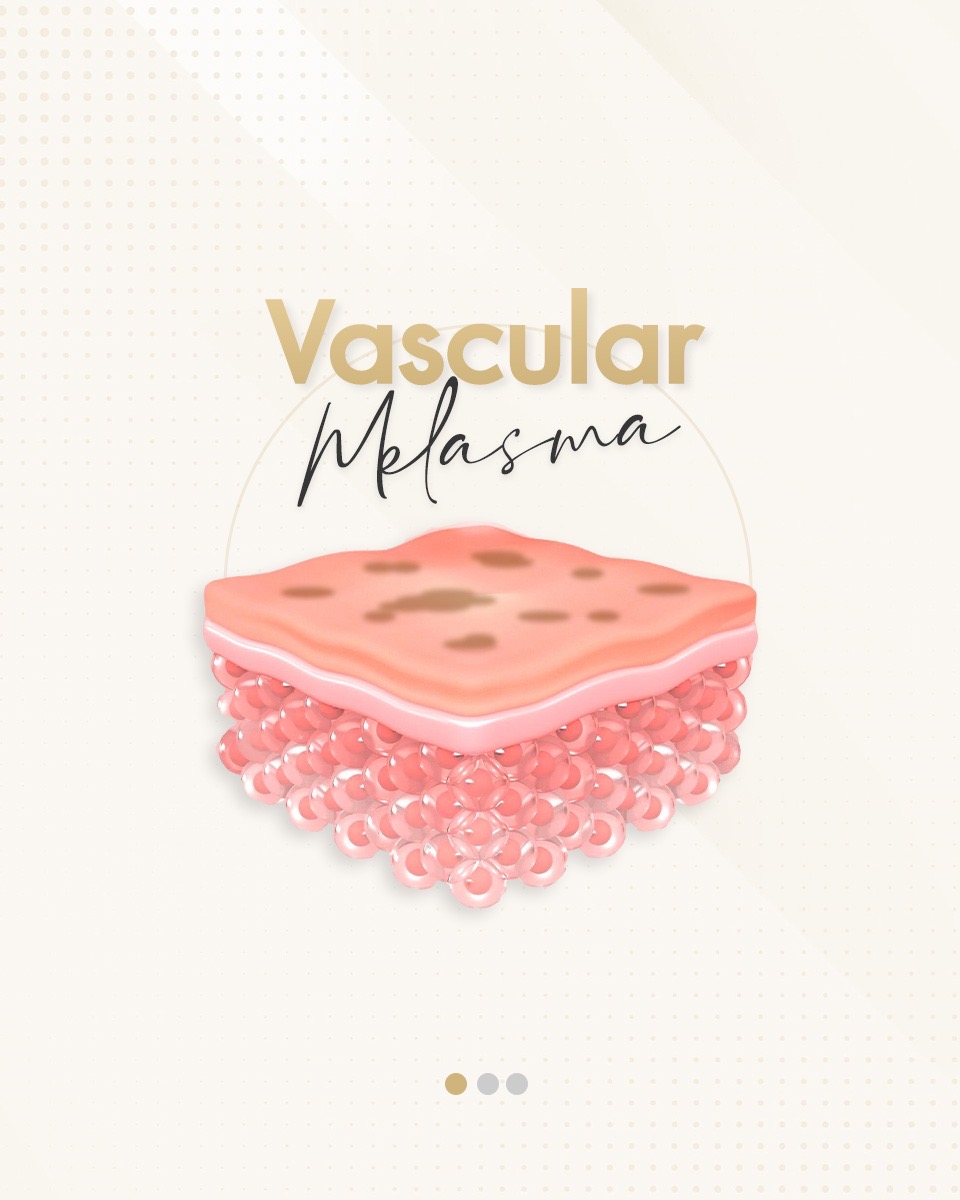
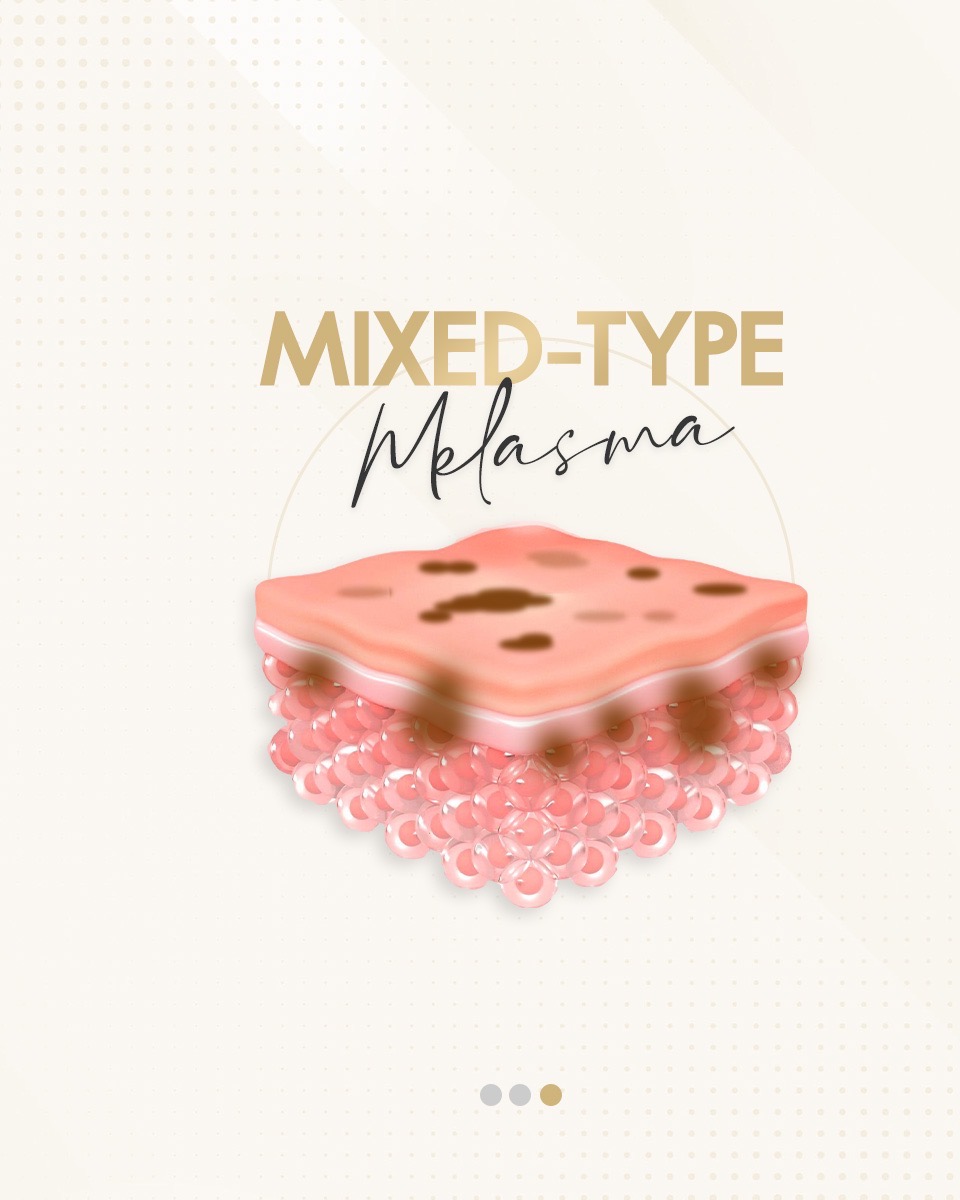
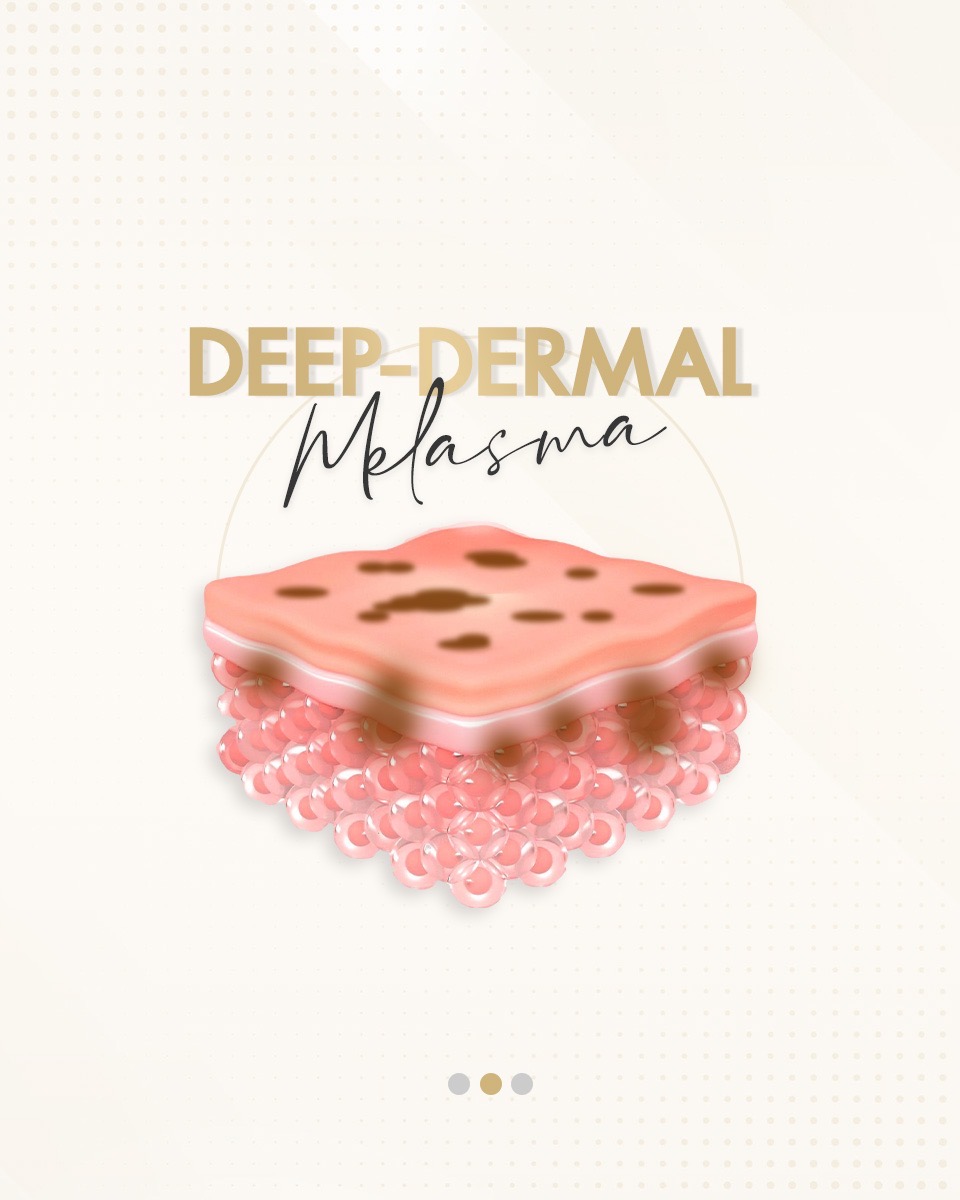
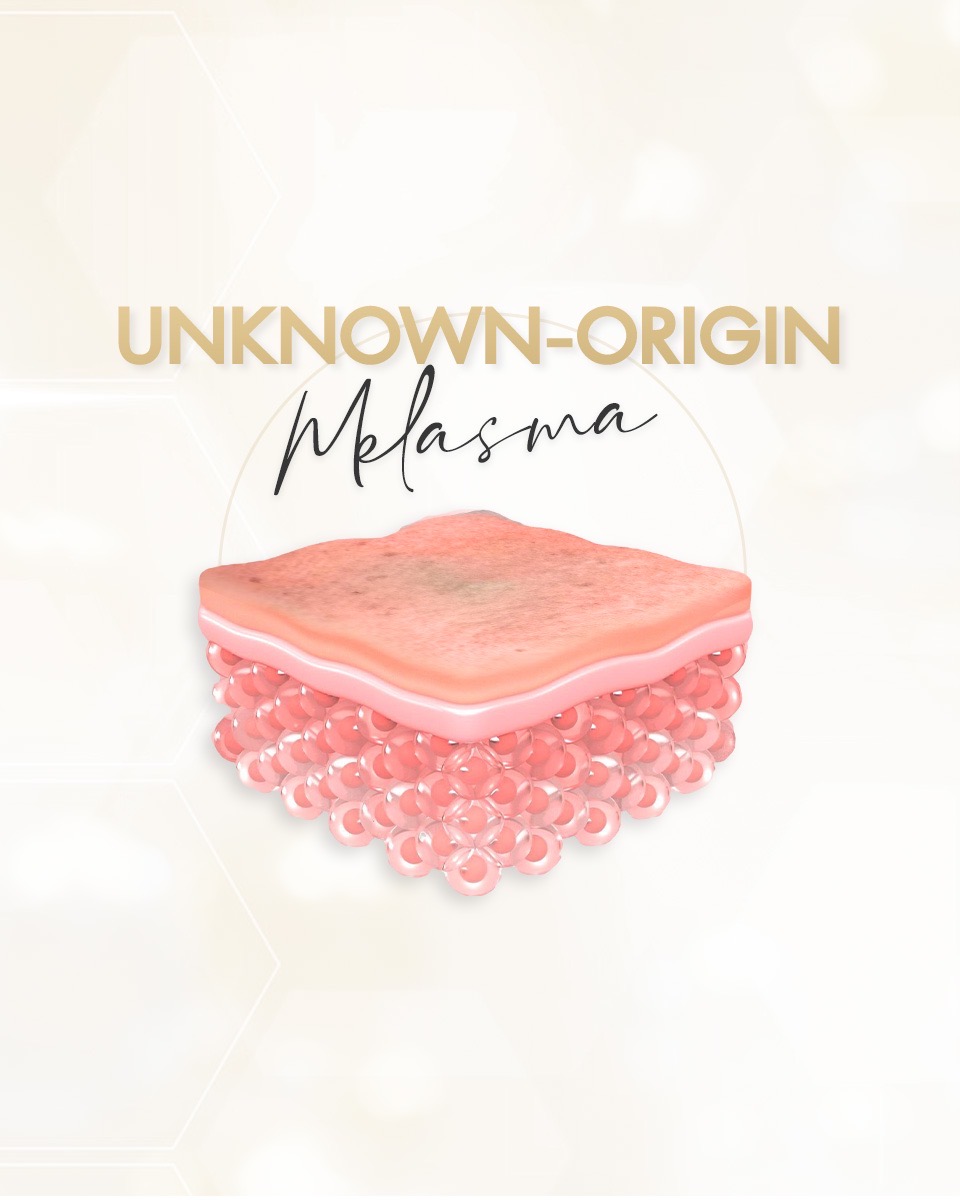
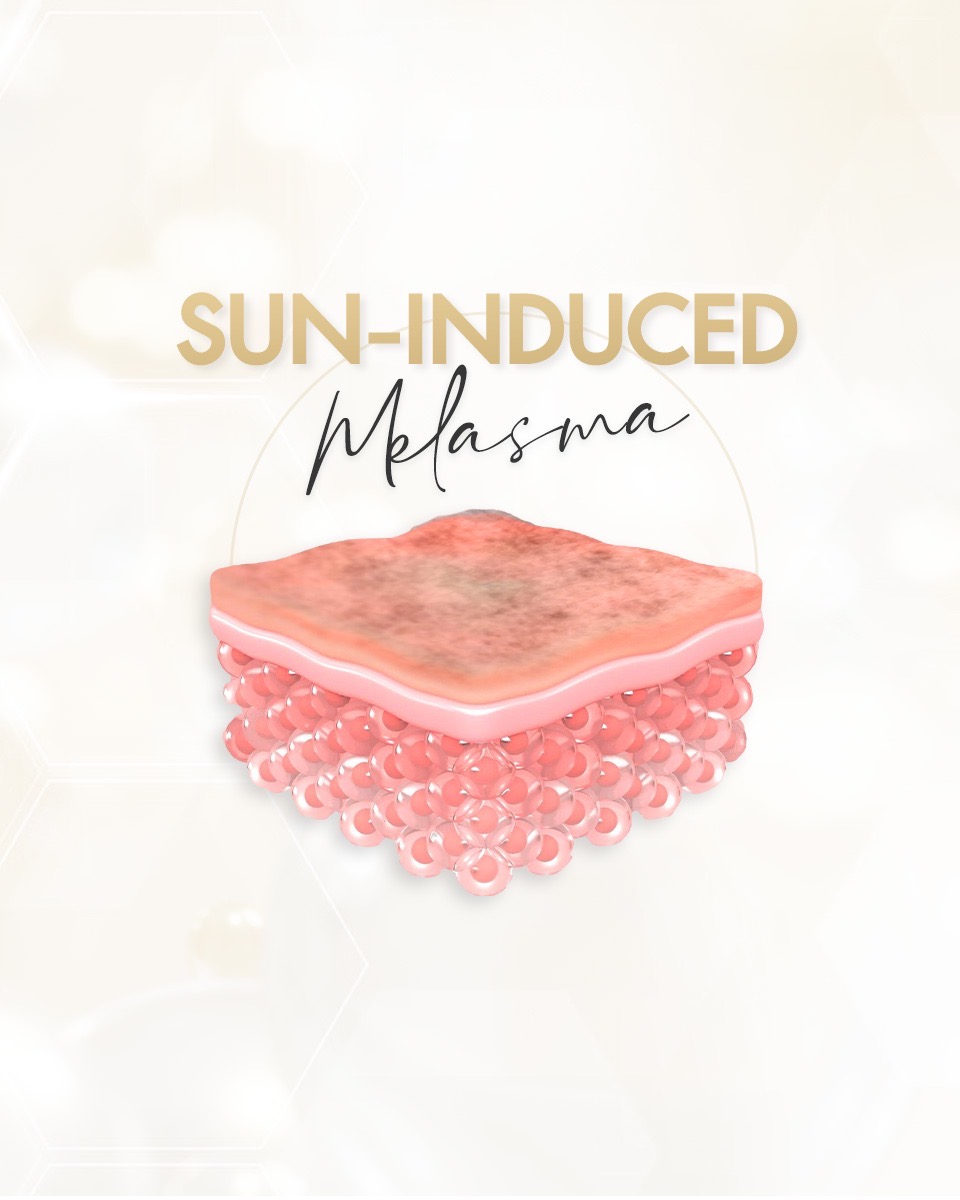
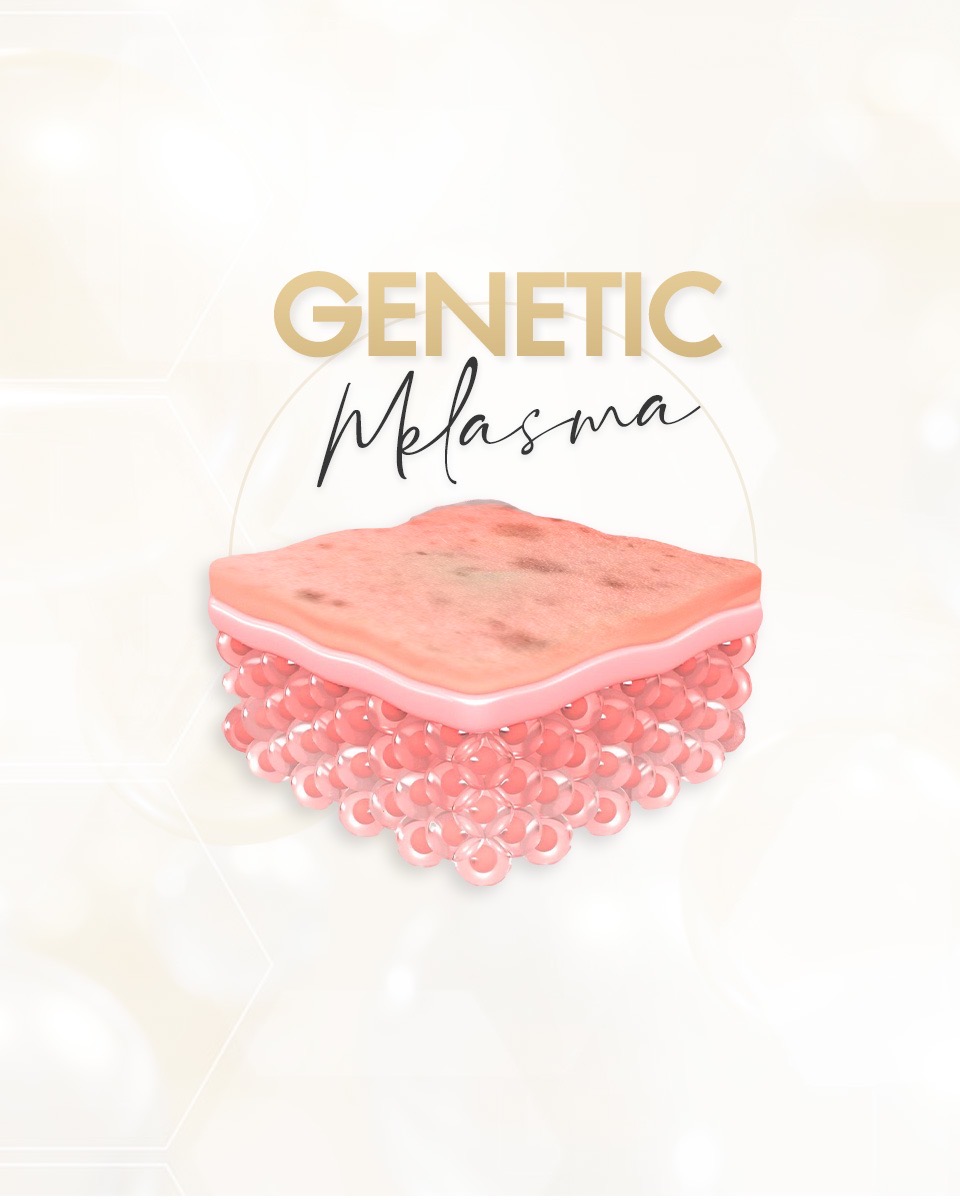
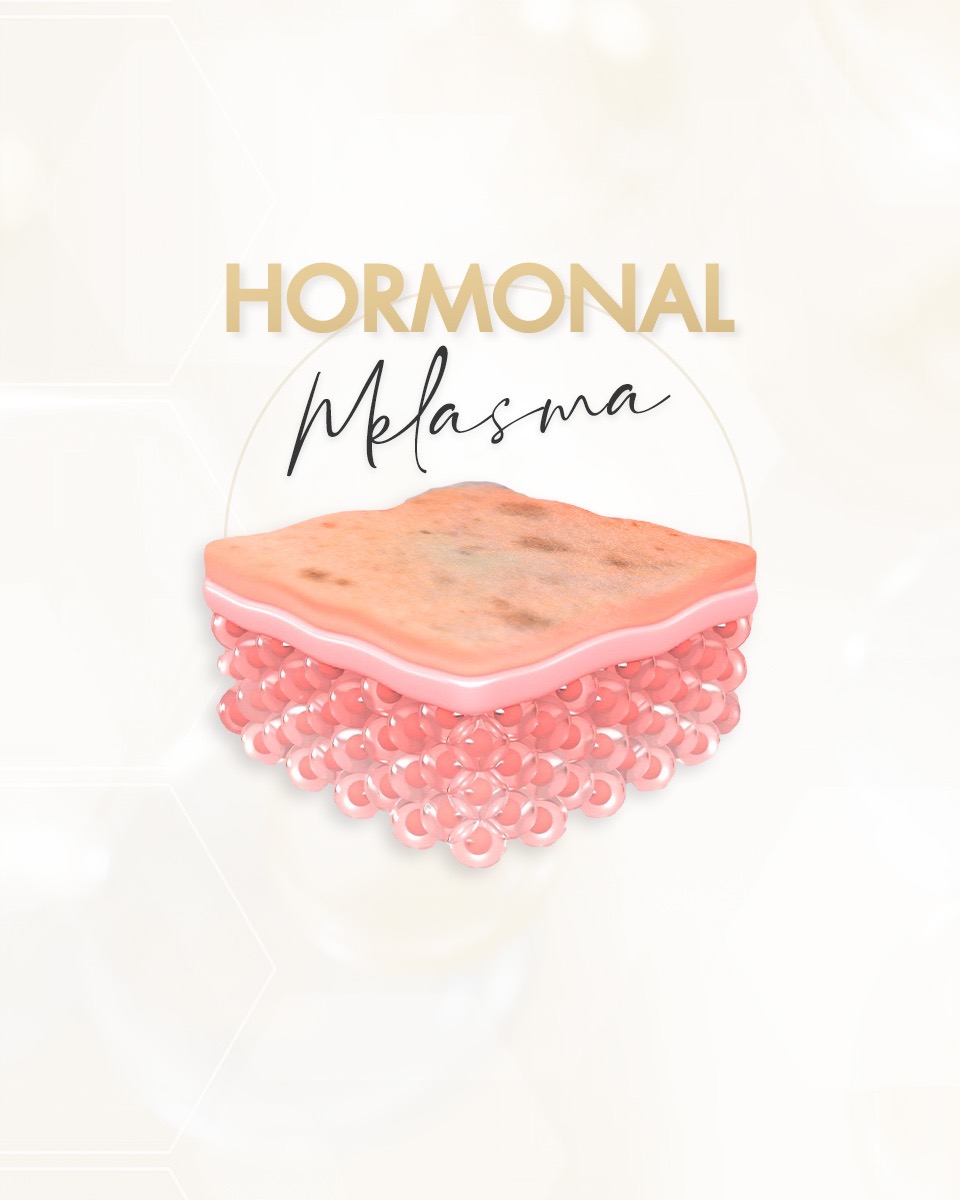
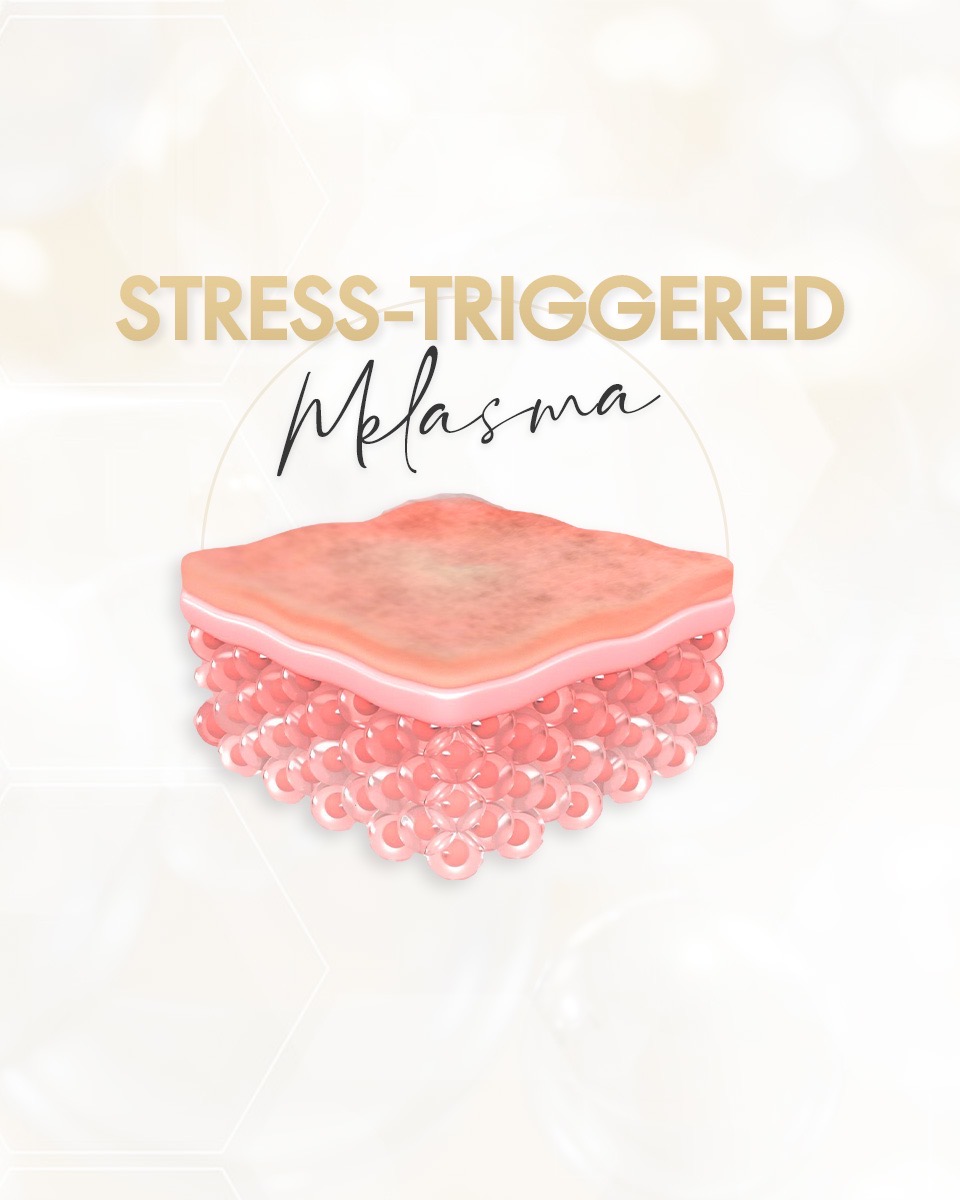
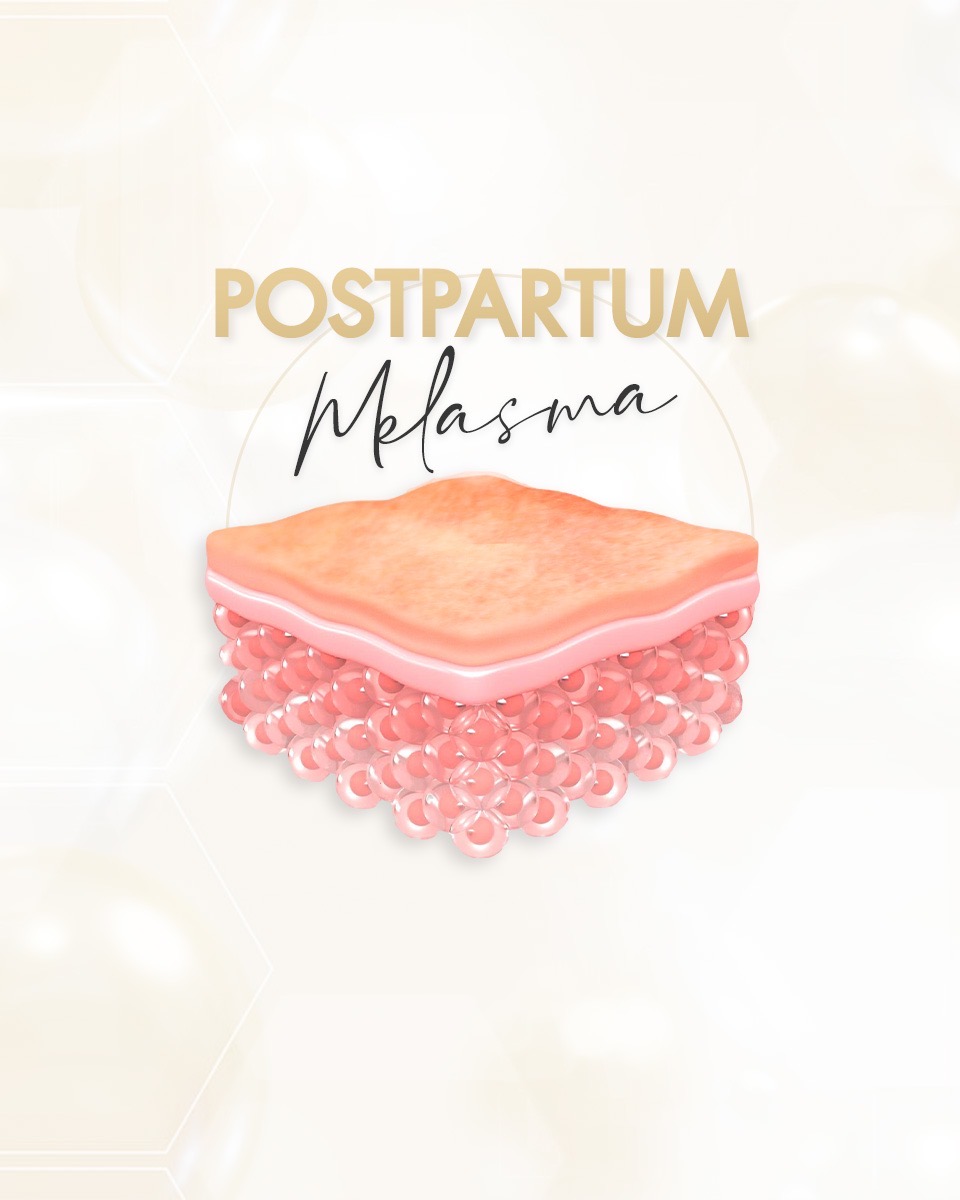

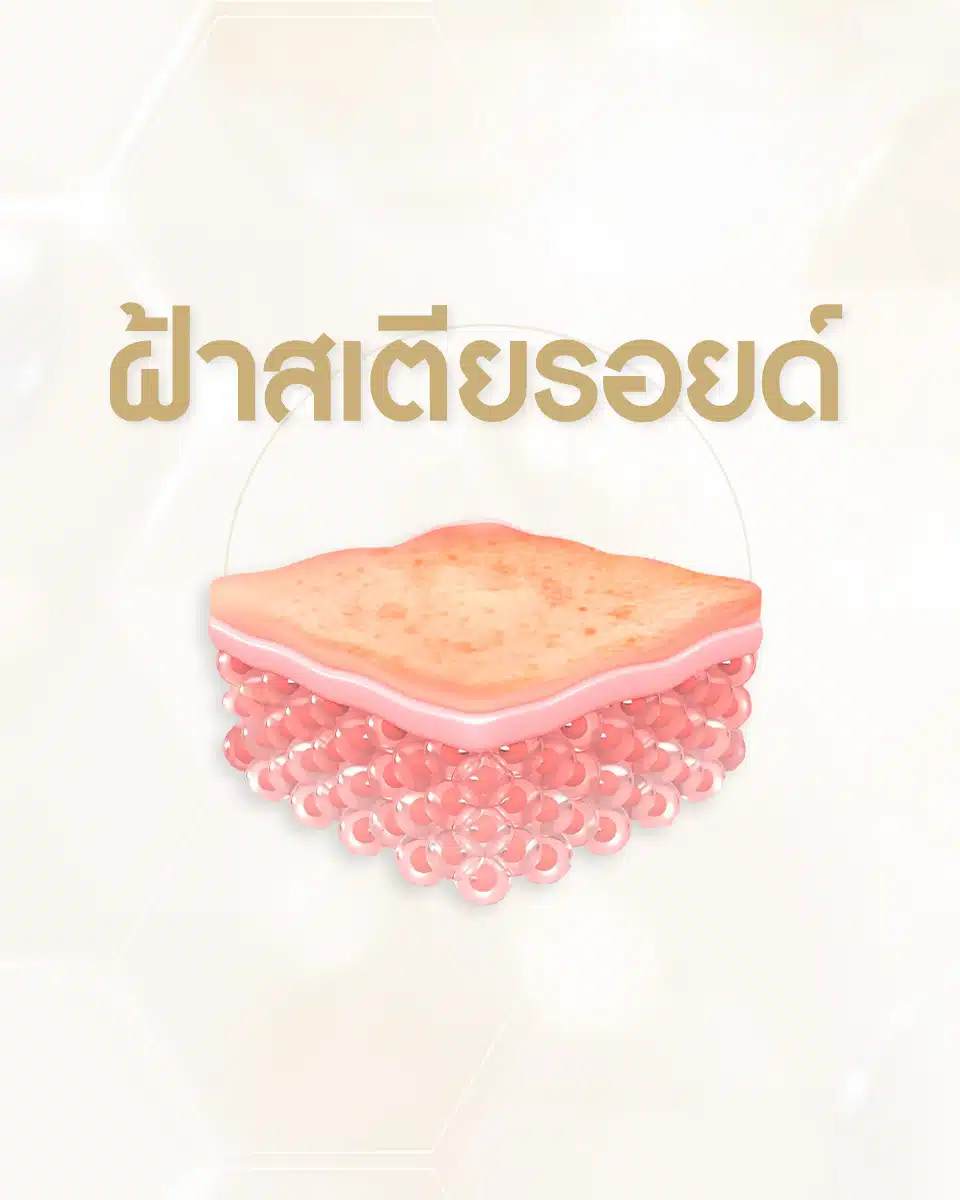

Who Is SMAPS For?

For those with melasma and dark/red spots
SMAPS treats melasma at the cellular level, fading pigmentation and redness without thinning your skin. It also boosts collagen and stimulates skin regeneration — making your skin firmer, smoother, and healthier from within.

For those with enlarged pores and clogged acne
This technique refines pores and clears congested skin — often caused by age, hormones, or excess oil. It also helps restore skin elasticity, reducing breakouts and blackheads.

For those with fine lines and sagging skin
After age 25, skin naturally loses collagen and elasticity. SMAPS helps firm up loose, dry skin while reducing wrinkles and signs of aging — restoring youthful bounce and long-lasting hydration.

For sensitive or reactive skin
Perfect for those with easily irritated or dry skin. This technique helps strengthen the skin barrier, enhancing resilience against environmental stressors.
SMAPS is a deep cellular-level treatment designed to restore healthy, resilient skin.
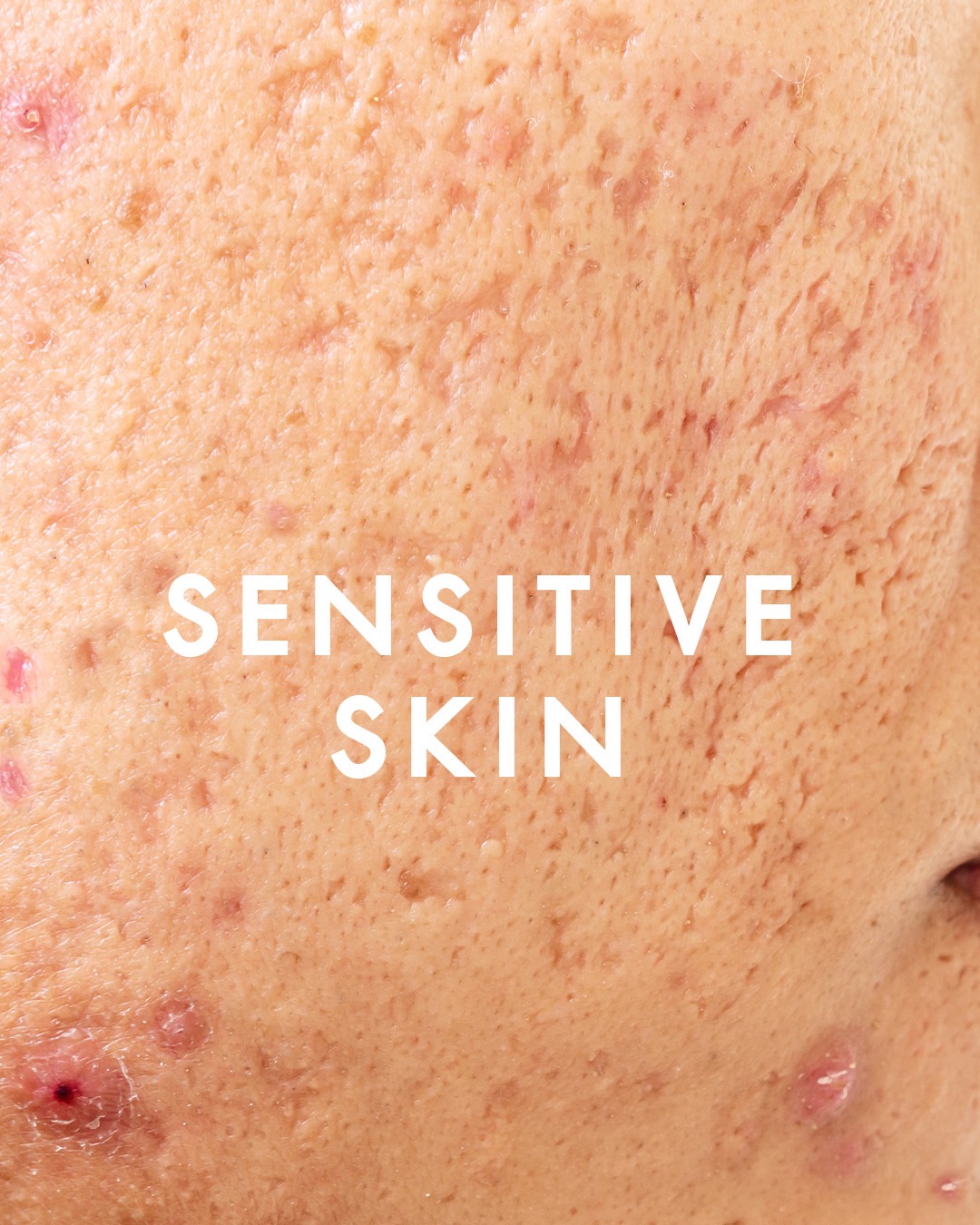
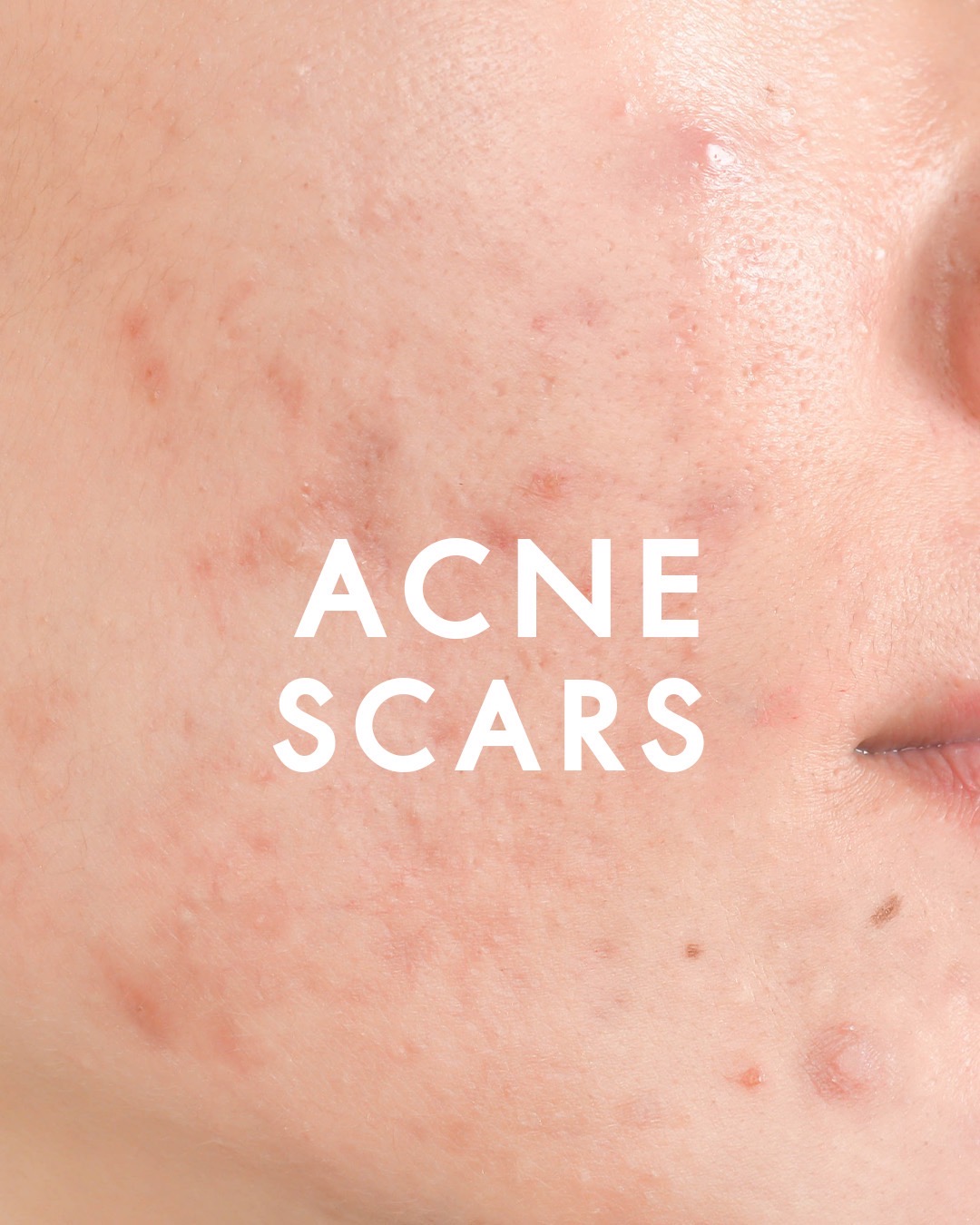
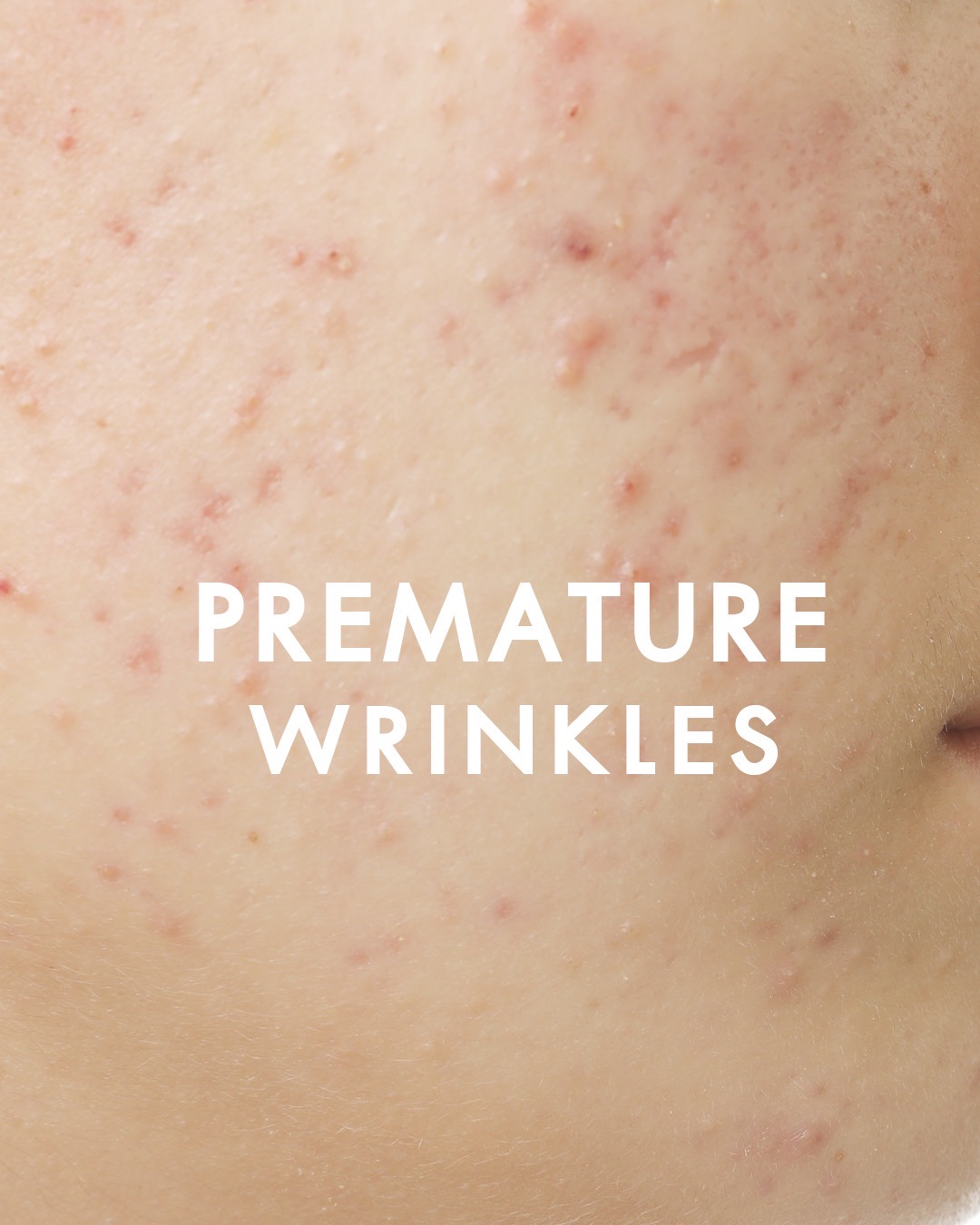
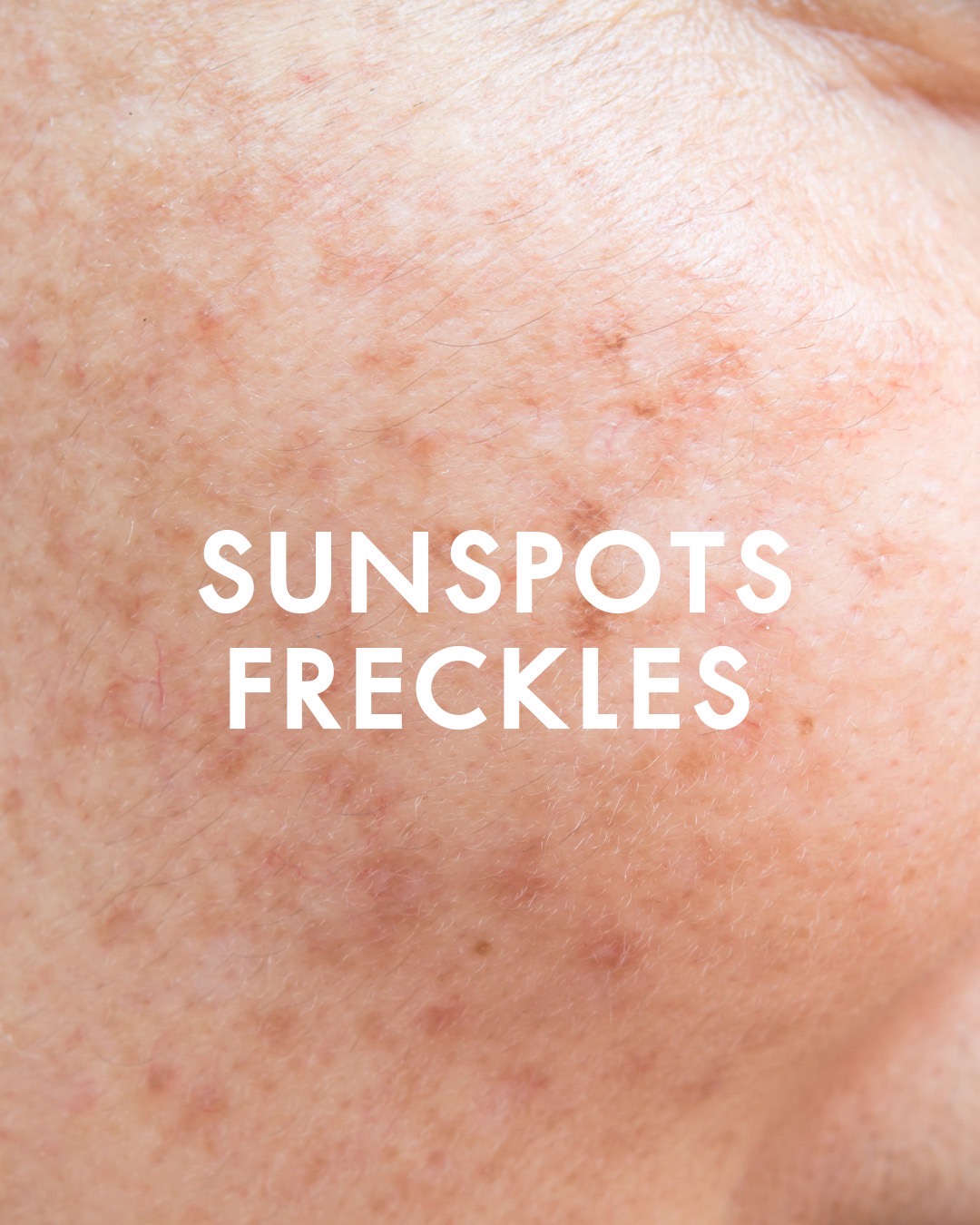
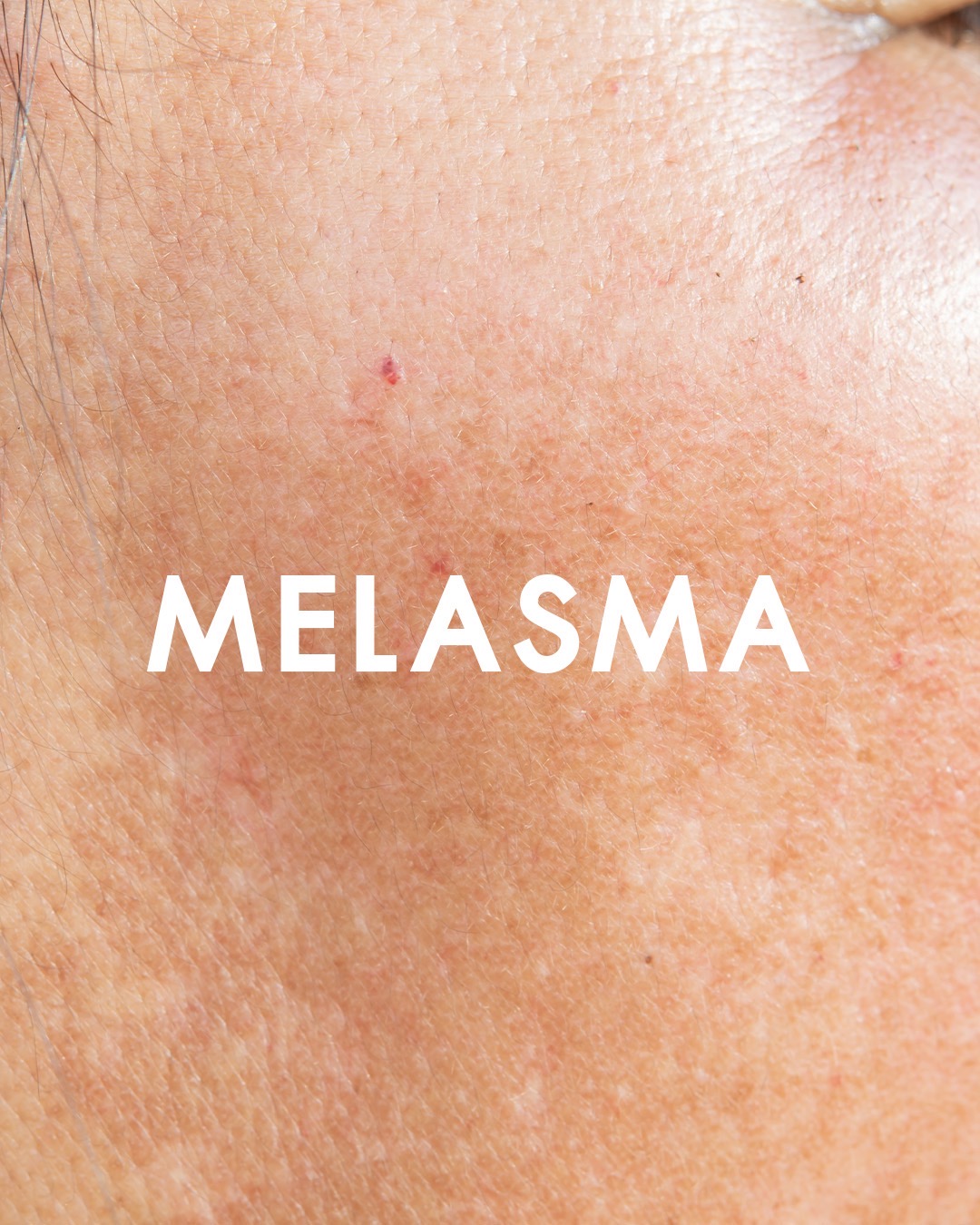
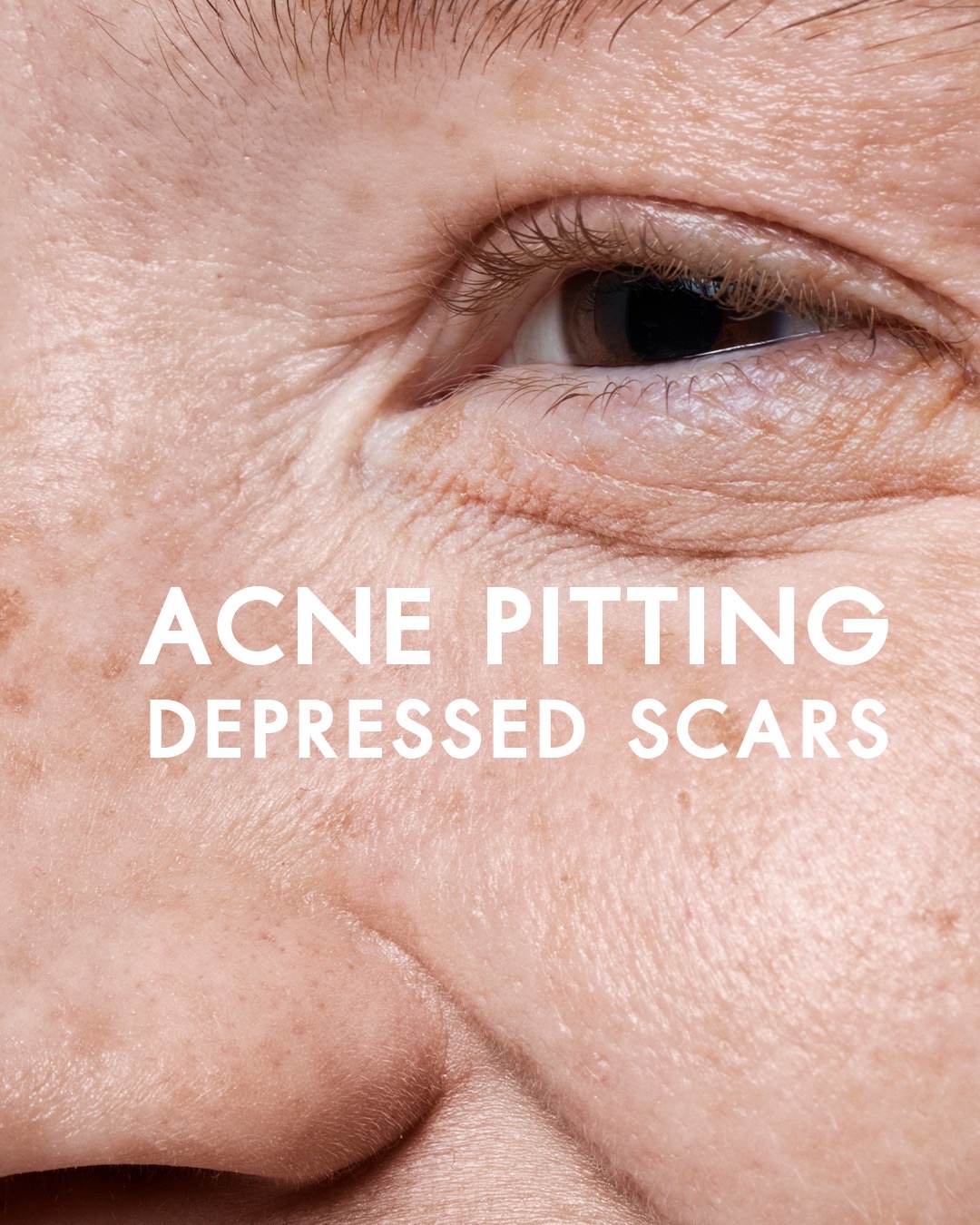
What Causes Melasma?



Benefits of Treating Melasma with SMAPS
1
2
3
4
5
SMAPS VS OTHER TREATMENTS WHY SMAPS IS BETTER?
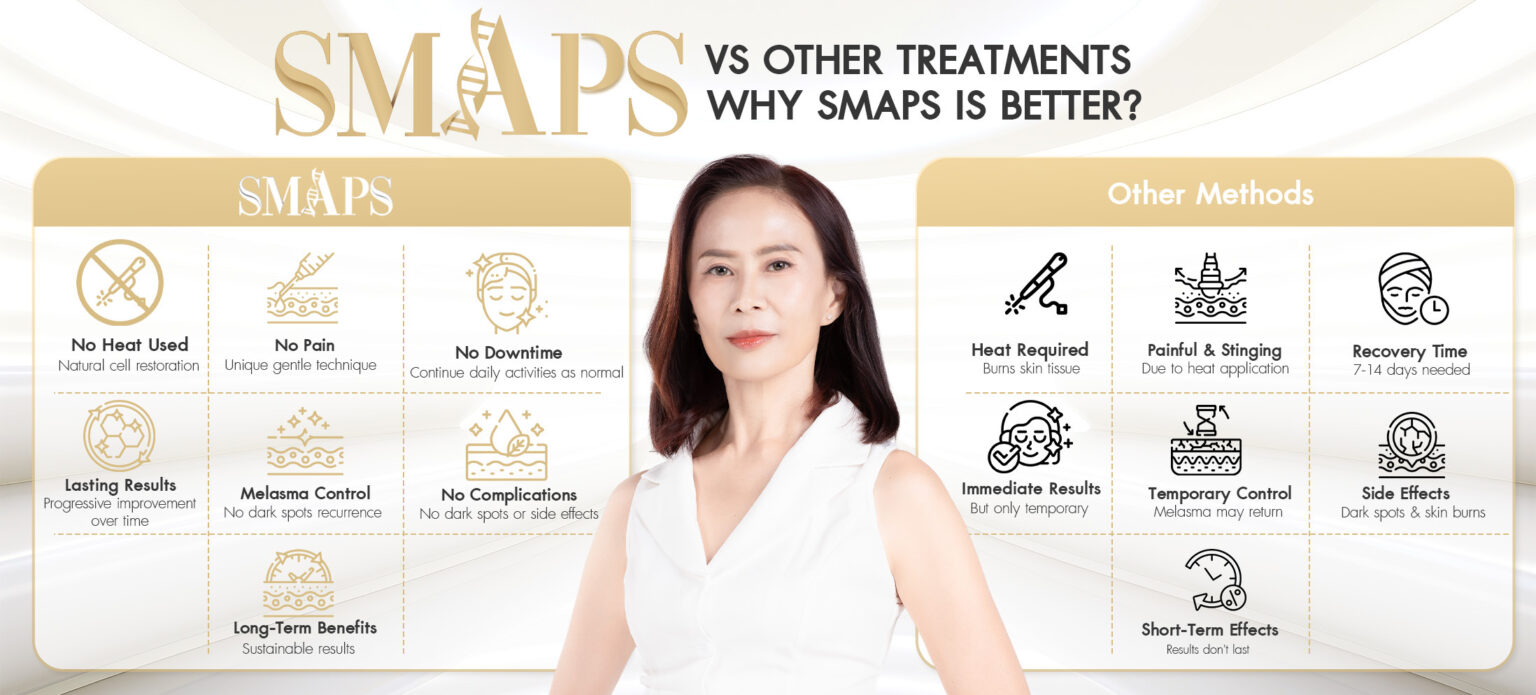
SMAPS รักษาฝ้าถึงระดับเซลล์

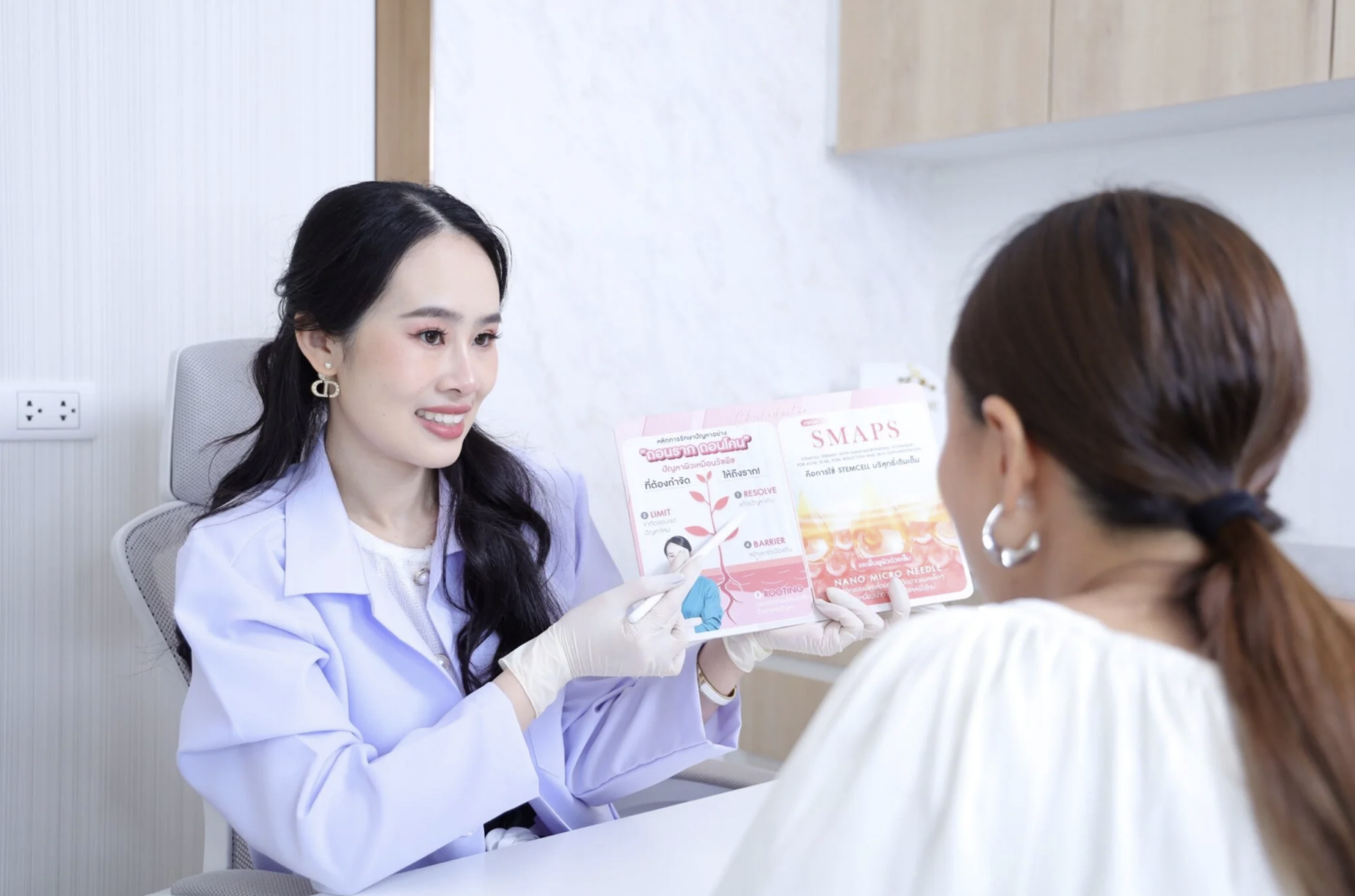


Real Stories Sharing
Articles About Melasma
FAQ :
Q: How is SMAPS better than laser treatments for melasma?
A: Laser treatments address surface symptoms using high heat, which can burn the skin and leave dark or red marks. SMAPS, on the other hand, uses no heat, causes no scabbing or scarring, and delivers longer-lasting results.
Q: How is SMAPS better than topical creams?
A: Topical creams can gradually thin the skin, making melasma prone to recurring. SMAPS works at the root cause using skin-repairing cells, offering a more targeted and lasting solution.
Q: How is SMAPS better than skin exfoliation (microdermabrasion)?
A: Microdermabrasion thins the skin over time, making melasma appear to fade initially — but it often comes back. SMAPS doesn’t thin the skin and helps strengthen it in the long run.
Q: Does SMAPS require downtime?
A: No, just avoid sun exposure for 2–3 days. After that, you can return to your normal routine.
Q: Who is SMAPS suitable for?
A: Anyone who has tried multiple treatments for melasma but hasn’t seen results.
Q: How long does SMAPS treatment take?
A: Typically 3–6 months, depending on the type and severity of melasma.
Free Consultation
Receive consultation and a voucher worth 10,000 THB
** Terms and conditions apply **








